Howling winds, miles of rolling fields and erratic boulders, thousands of sheep, blood, not much sleep and some confused flamingos made for a Patagonian experience unlike any other…
Last summer an email showed up in my inbox. I thought it was a joke. However, fast forward six months and I’m sitting in a guys house I’ve never met. Colourful long stalked lupins tumble around in the wind outside the window and the massive view extends across the Strait of Magellan. I’m in Punta Arenas, Chile, the end of the southern continent. In a month I’ll go to work in Antarctica, but first I need to cross the Strait of Magellan to the island of Tierra del Fuego. A lot of sheep need catching and sorting. Welcome to ‘La Marca.’
Day 1/6
After meeting Benja, my Chilean connection, and eating a whole guanaco leg (think beige llama but bigger) the night prior, I bussed to the Porvenir ferry terminal to meet him and the truck that would take us to the farm. I arrived with a backpack full of gluten free food (#ActualAllergy #NotHipster), a sunburnt nose and an inability to stay warm in the fierce winds. Benja was unperturbed by the weather and even managed a half hour nap lying outside on the concrete.



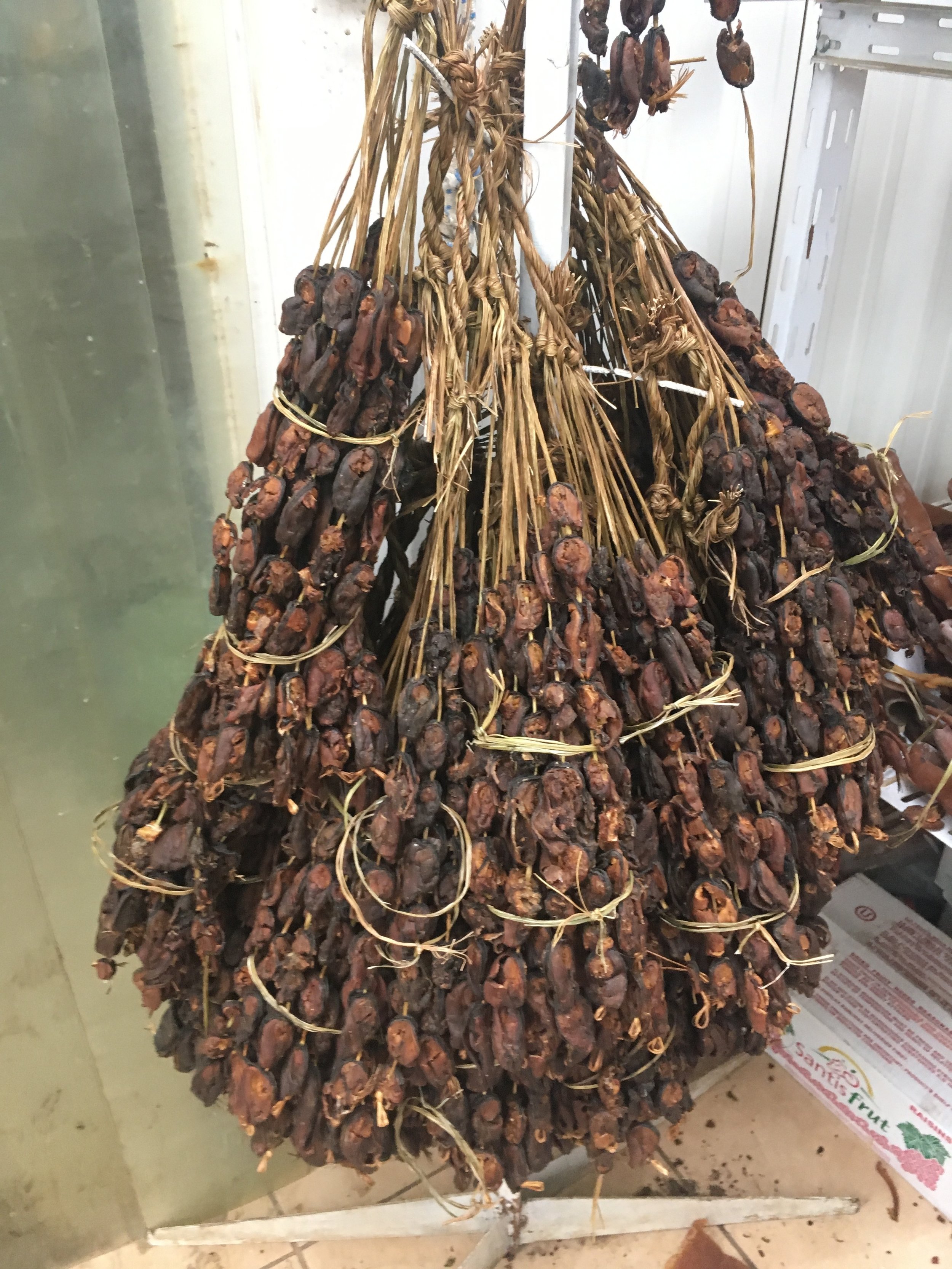

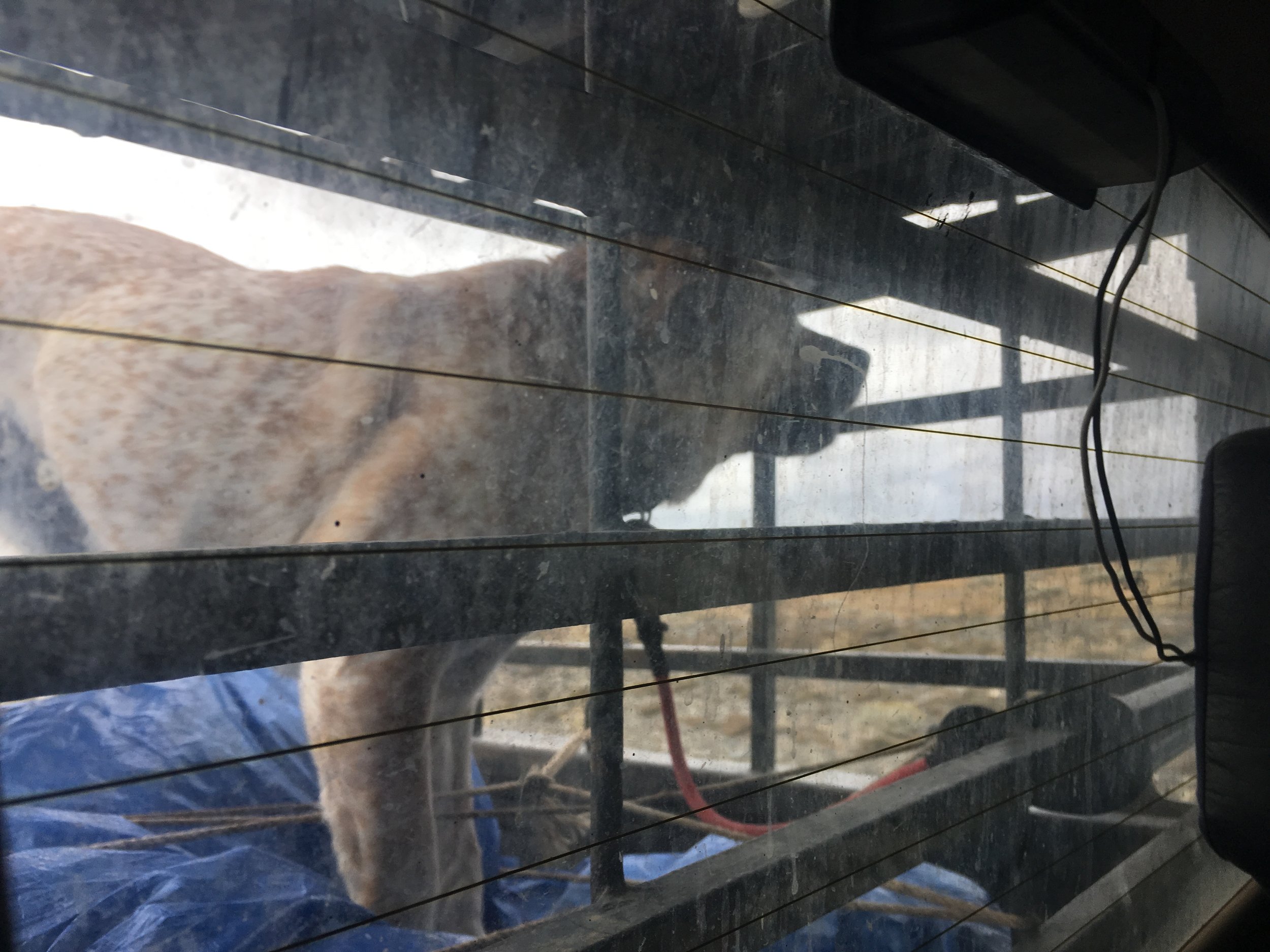



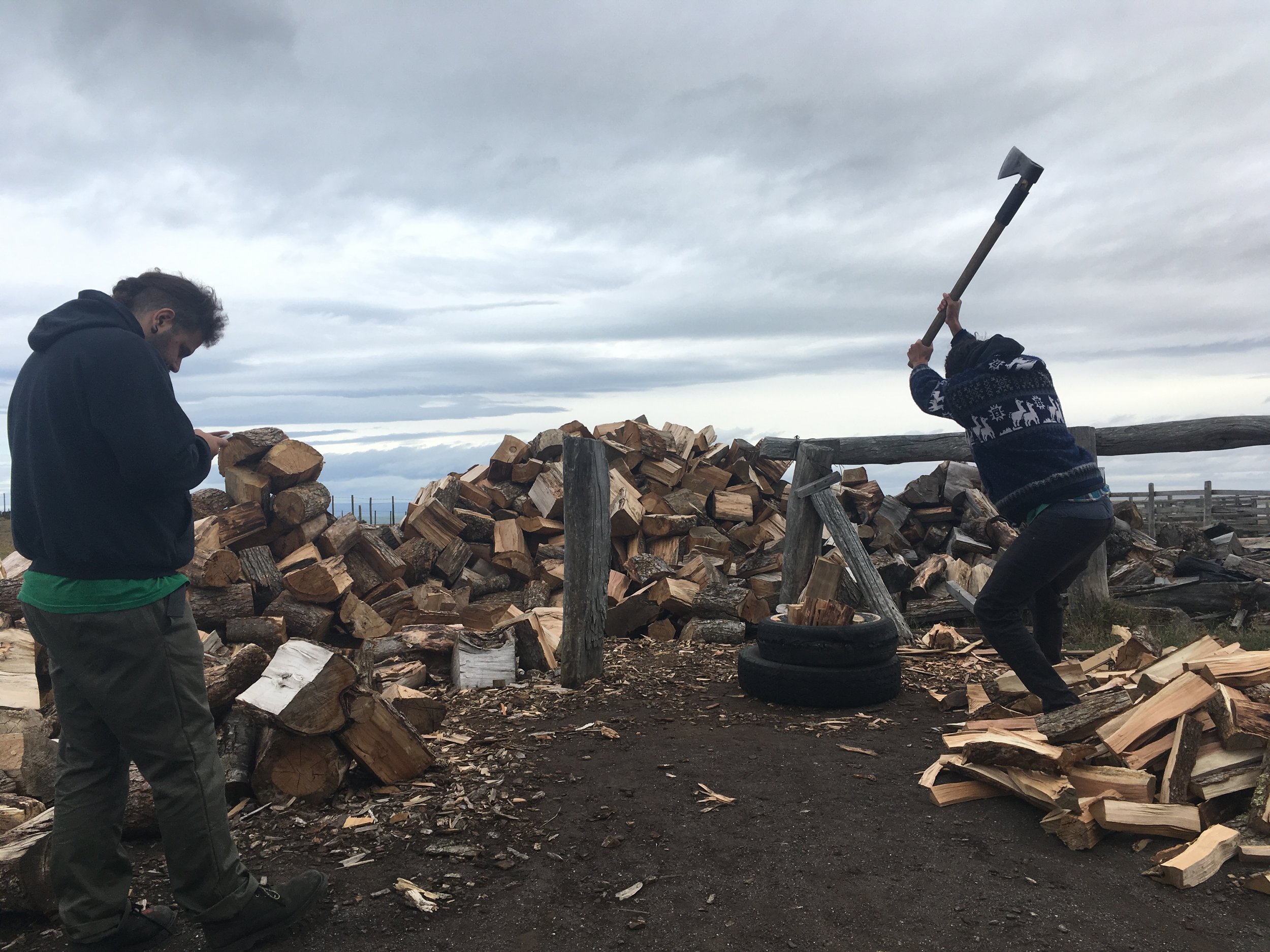
The ferry was a double ender with long ramps that lowered onto the beach. There are no docks. We spent the two hour ferry ride watching Sei whales, gliding albatross’ and black and white counter shaded Commerson’s dolphins perform acrobatics. Onboard we met two of the ovejeros, or sheep shepherds, and a barrel shaped dog who had no sheep herding skills, but was apparently a legend at chasing the introduced Canadian beavers. We stopped in Porvenir and loaded up with chocolate bars and supplies then lost ourselves to daydreams and the dull roar of studded tires rolling on gravel roads. It was a two hour drive to Tres Hermanos farm, at the head of Useless Bay.
The farm has young, awesome owners, and like most small farms in the world these days struggles to maintain a constant supply of labourers. So, upon arrival we met more than just ovejeros. Help for La Marca (‘the marking of the sheep‘) consisted of a group of university friends who were more than happy to see each other again.
Note: Click on photos to expand.
Day 2/6
The day started with the screams of a wild animal as a long haired whippet killed a wild cat outside the window. We passed time throughout the day cutting firewood and attempting to photograph flamingos (yes, at 53 degrees south, there are flamingos). After which we napped for three hours, which is a cultural thing that busy North American, 8-hour sleep, type people aren’t very good at. I at least didn’t understand the need for it, but I didn’t fully appreciate what was coming.
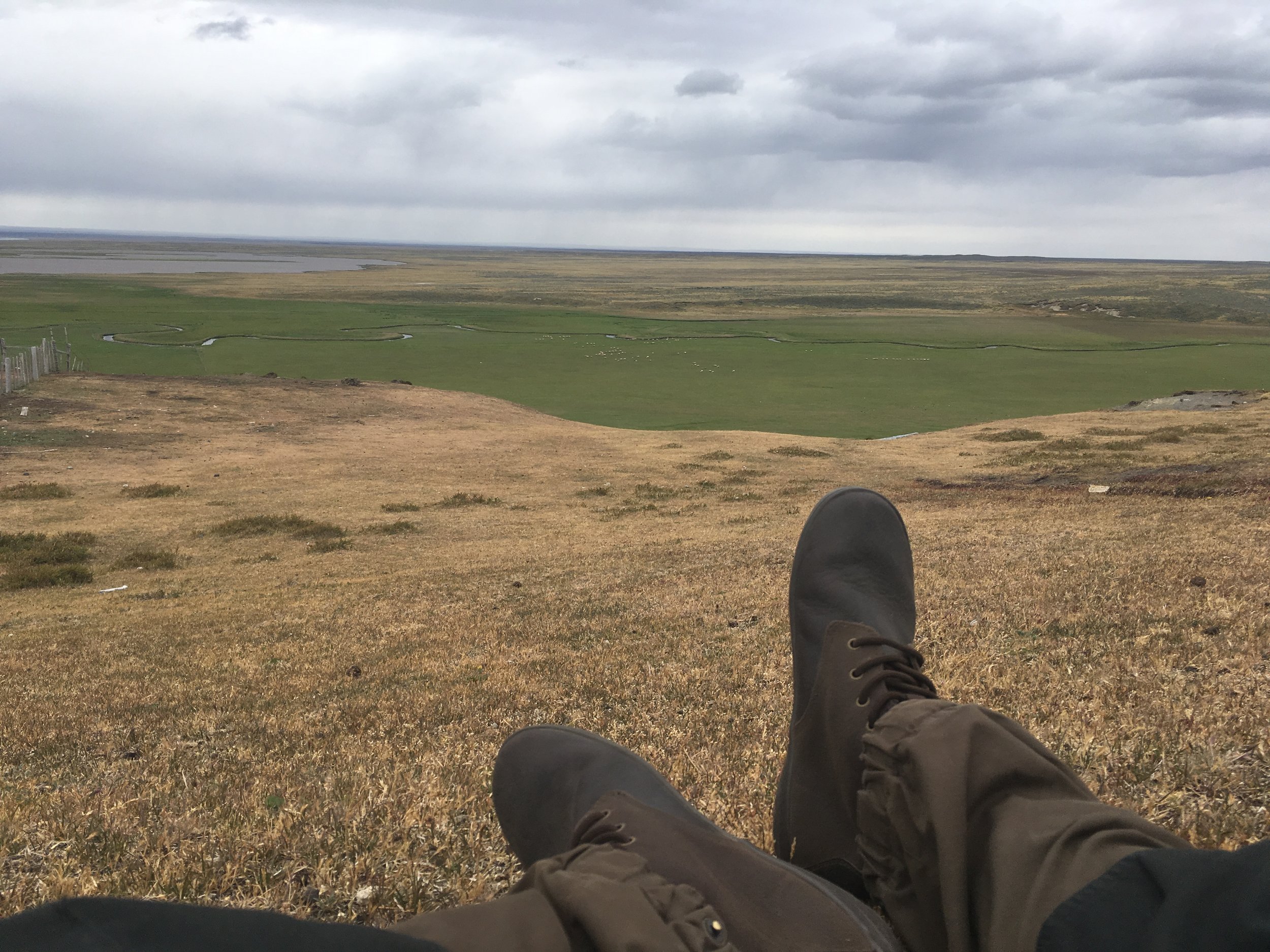

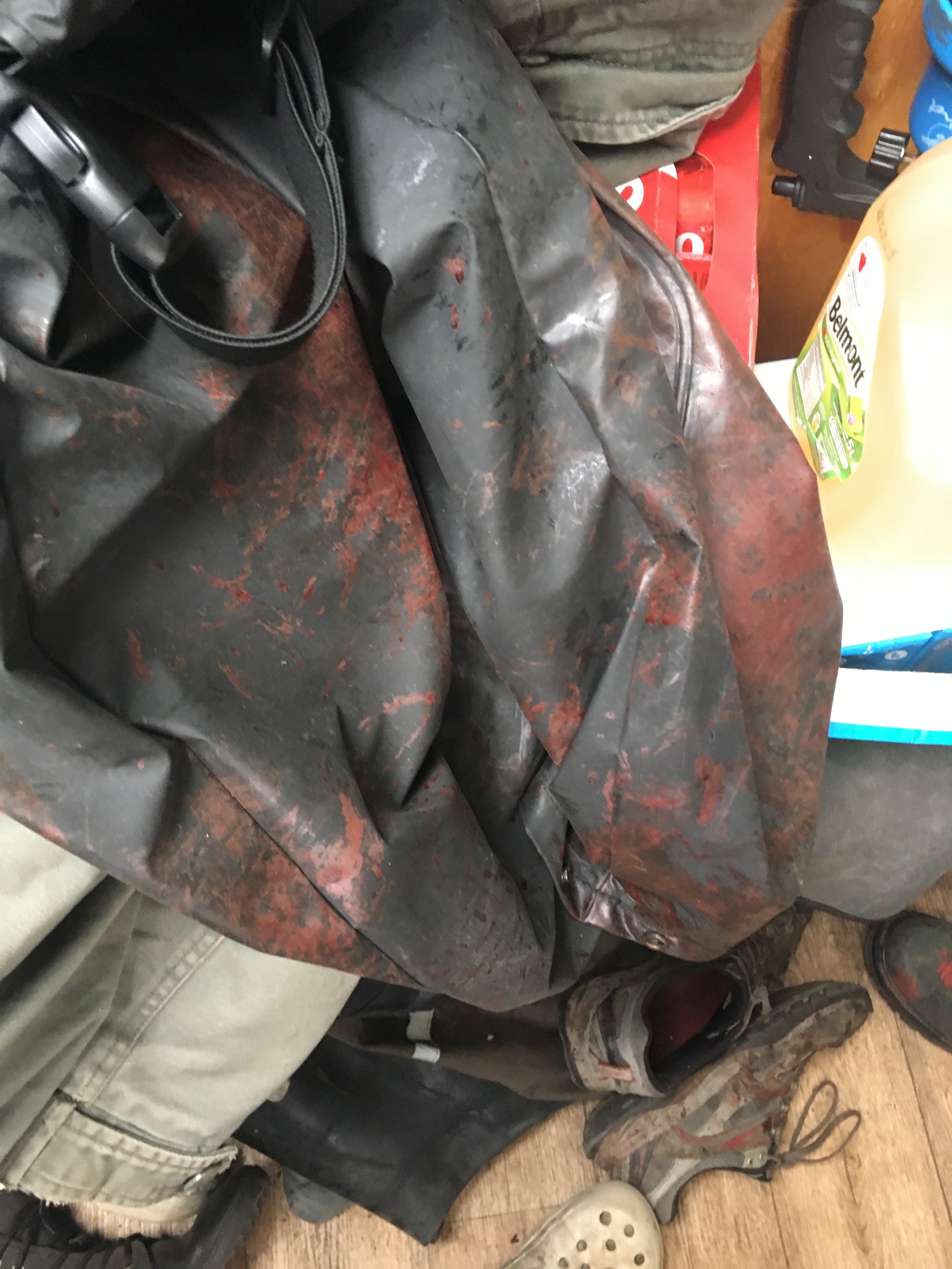
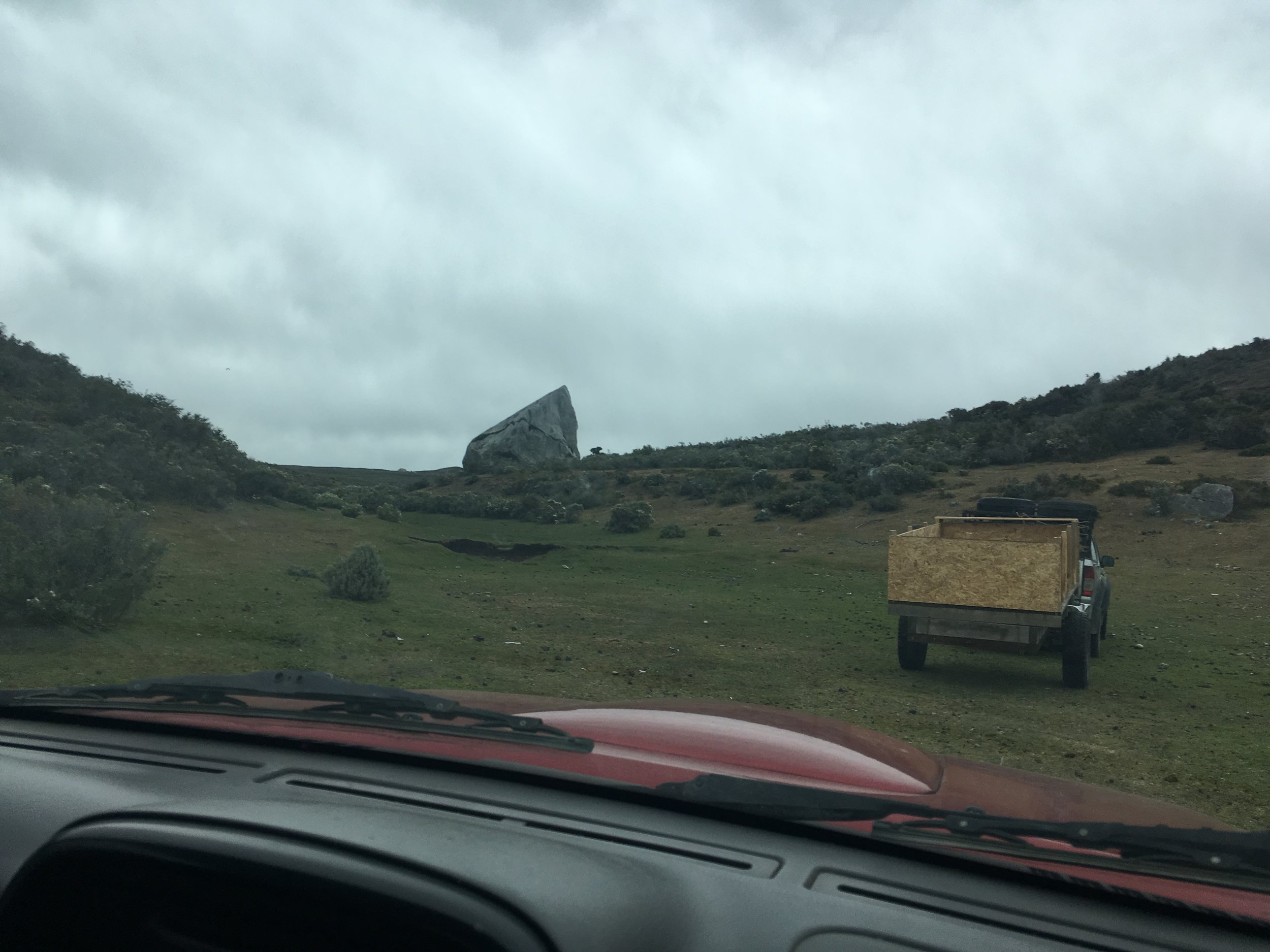
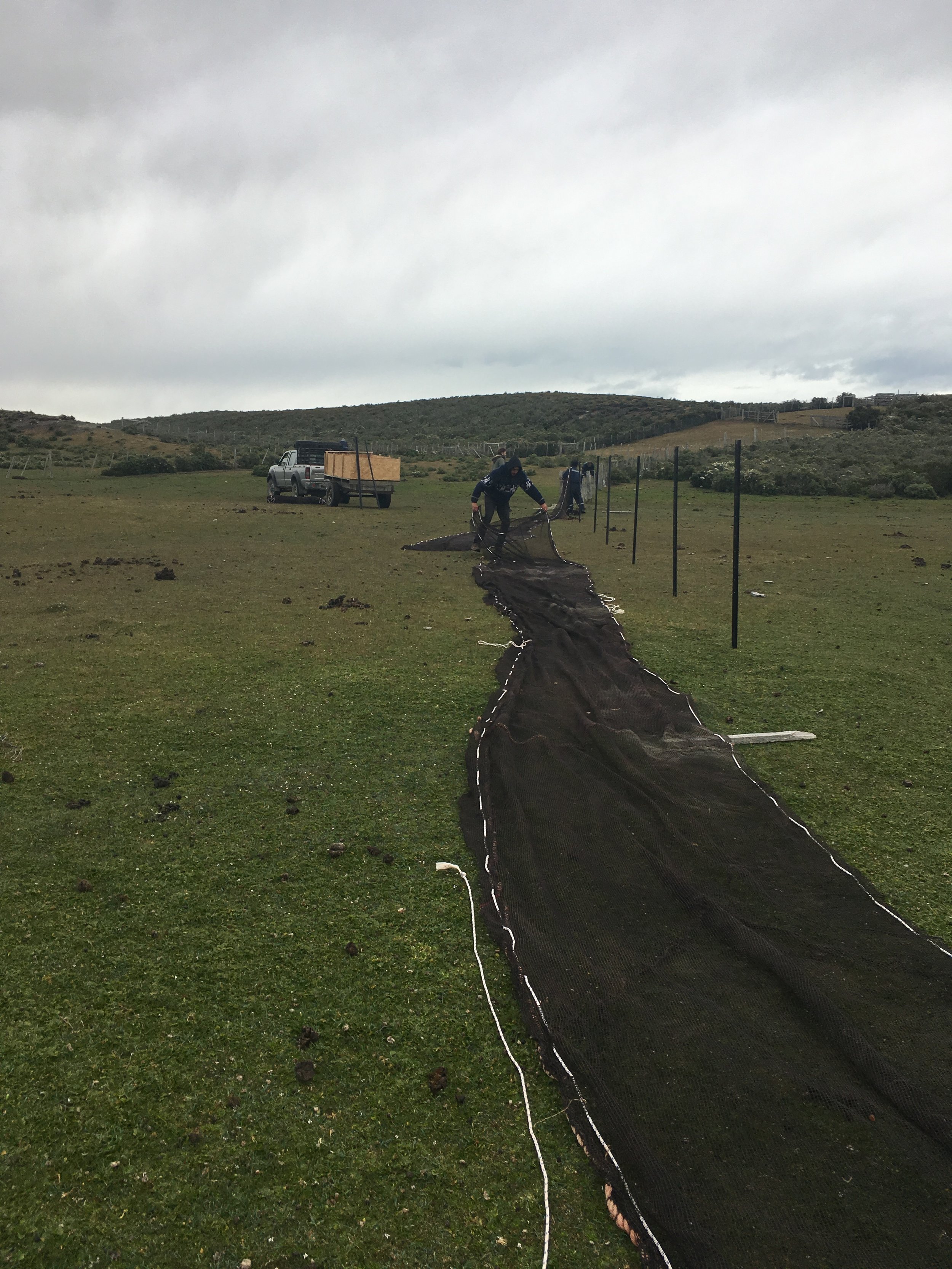
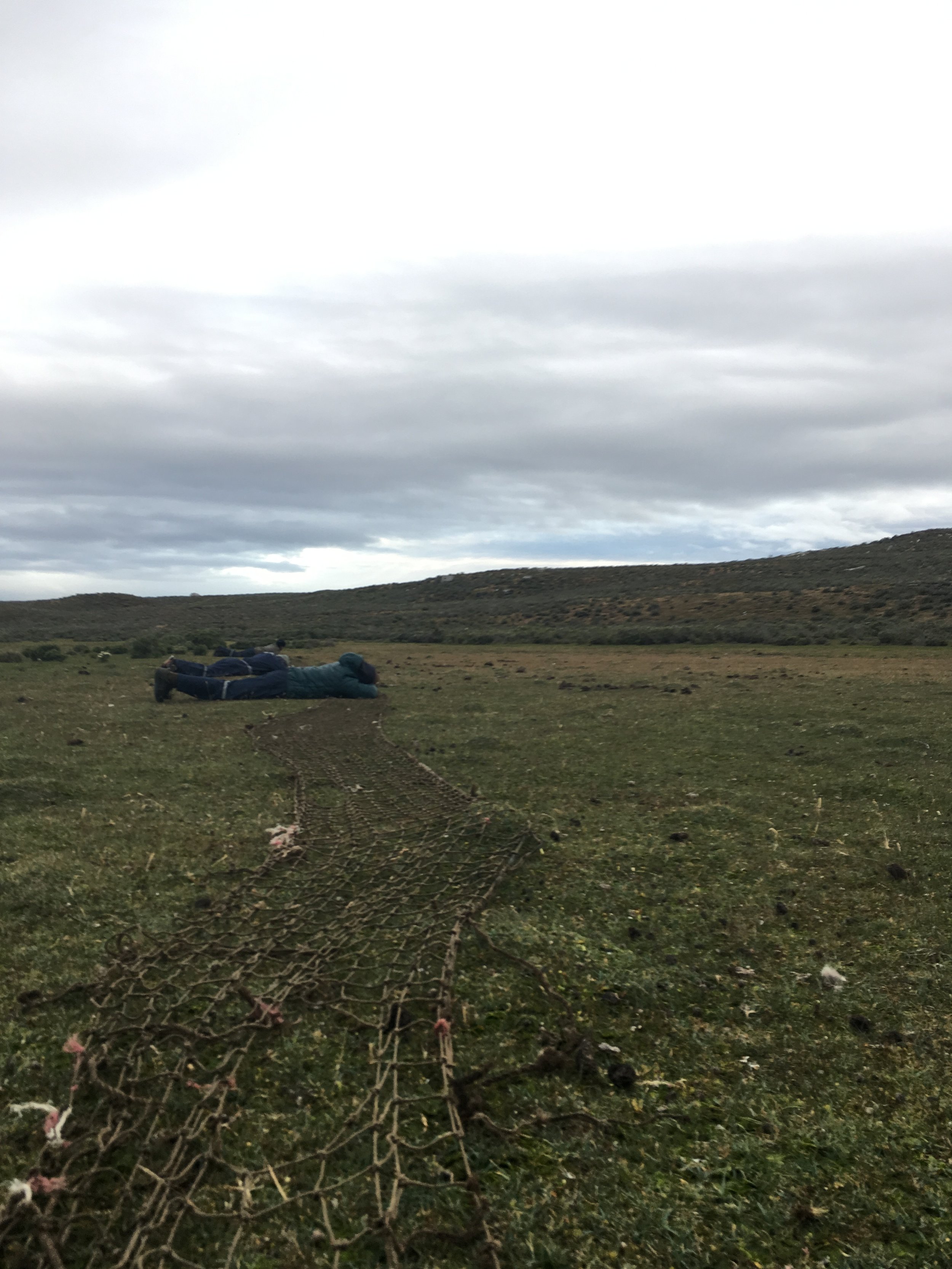
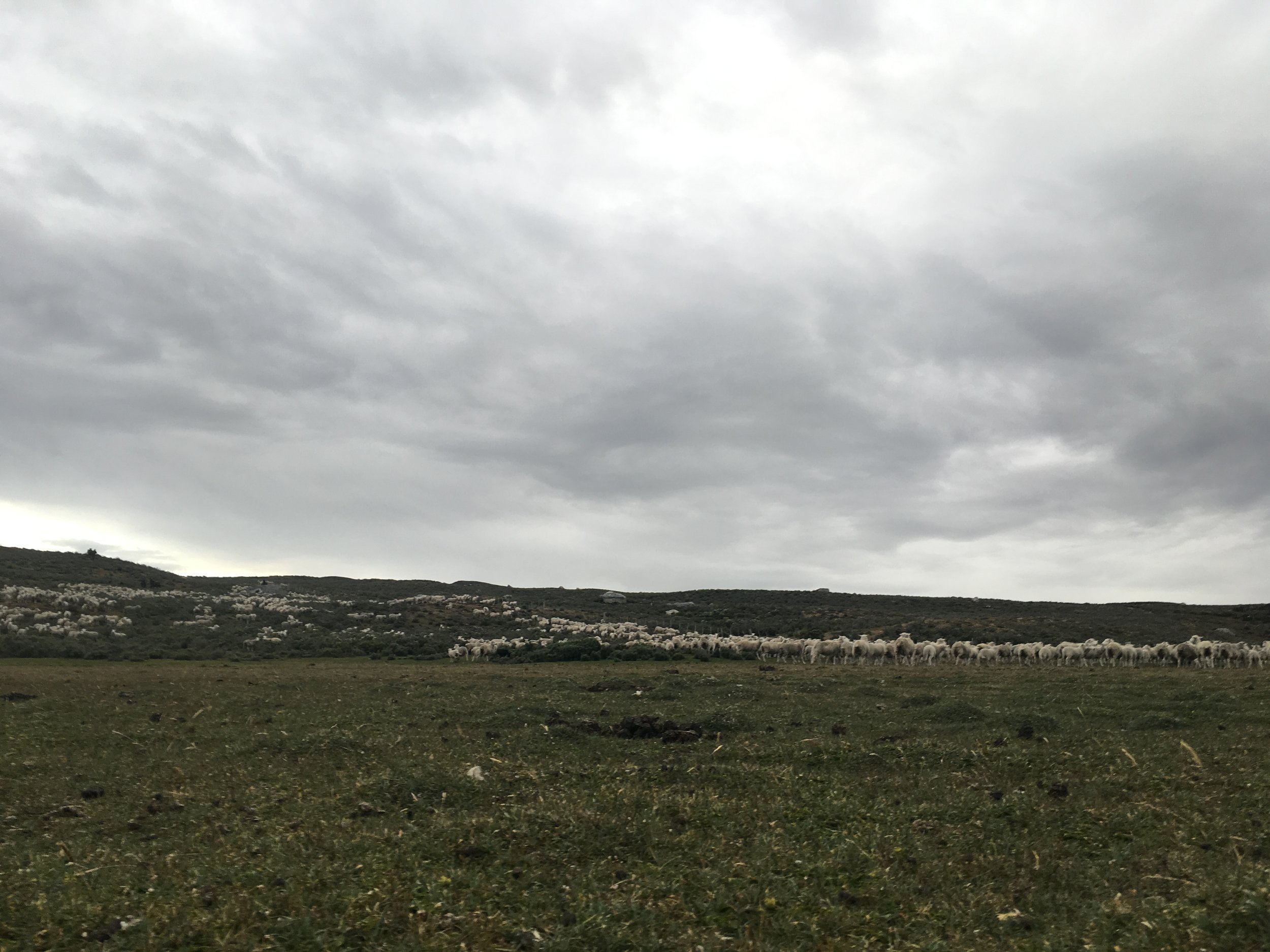


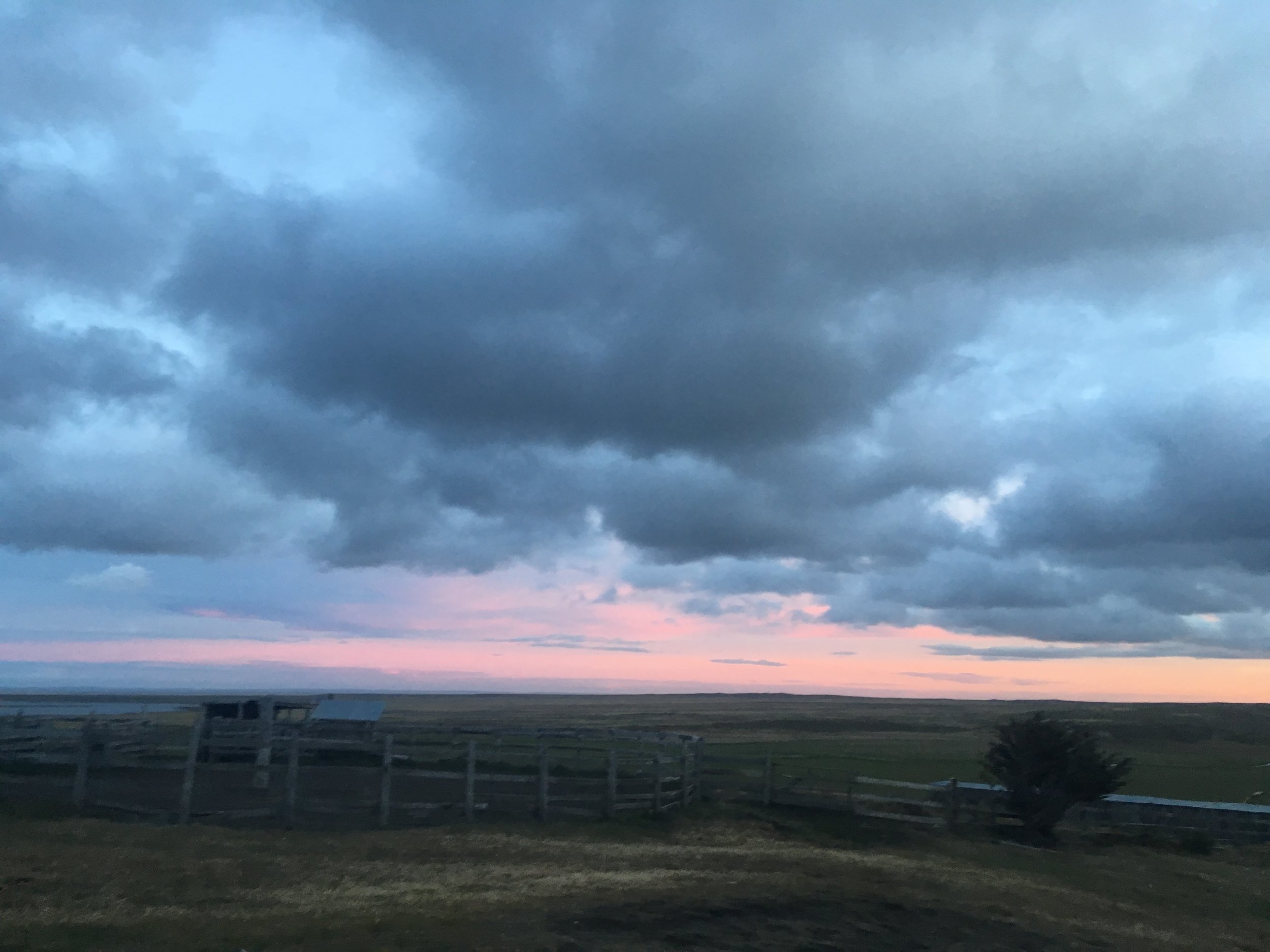
At 3pm we drove deep into the farm. It was described in size as, “walk to the horizon, then do it twice more to see where it ends.” The geography is a mix of hills, interconnected flat fields and tough knee high scrub. Tossed like ancient marbles across the landscape, giant granite erratics (boulders the size of houses) poke out at funny angles and add a piece of curiosity to each vista.
Several people were on horseback, while two diesel trucks carried the rest of us. Those on horseback disappeared from sight as they searched for the flock of sheep. In the meantime, the rest of us set up a large funnel shaped fence to corral the flock into a smaller field. Unfortunately, two on horseback were tossed —one into a river and the other into the mud. One spent three hours digging his horse out. We lay in the wind, unaware, for five hours waiting in stillness so as not to scare the sheep. Shelter was scrub, so lying in the grass with hands pulled deep into sleeves, collars up and arms crossed was the best way to stay warm. I regretted my lack of warm hat and choice to wear only a t-shirt and sweater.
Eventually, the flock was seen and driven into funnel. We popped up from hiding and did the work to run a net across the back of the funnel and drive the sheep into the smaller pen. We finished at 9:30pm and drove back down to the farm. Night cap was a glorious warm mutton soup and cutting the next days lamb up with a hack saw.
Day 3/6
The next day started the day at 4am after three hours of sleep. I ate some canned corn and peanuts for breakfast and we drove out to the field. Those on horseback took an hour to round up the escapees. Then we worked to herd the sheep into consecutively smaller pens —separating the lambs from the adults.
The idea is to understand overall flock numbers after the spring lambing season. Then ‘mark’ them for wool quality for the Patagonian merino breeds, or by size for the meat lambs. Marking means lifting the lamb up, resting it on a wood railing and having four people rotate through to inspect it; clipping both ears with the farms pattern, castrating the non-breeding males, cutting of tails, and painting the male and females a different colour. While yelling “Macho!” or “Hembra!” to speed it up for the painter and the tail cutter who tosses tails into a male or female pile to be counted later.
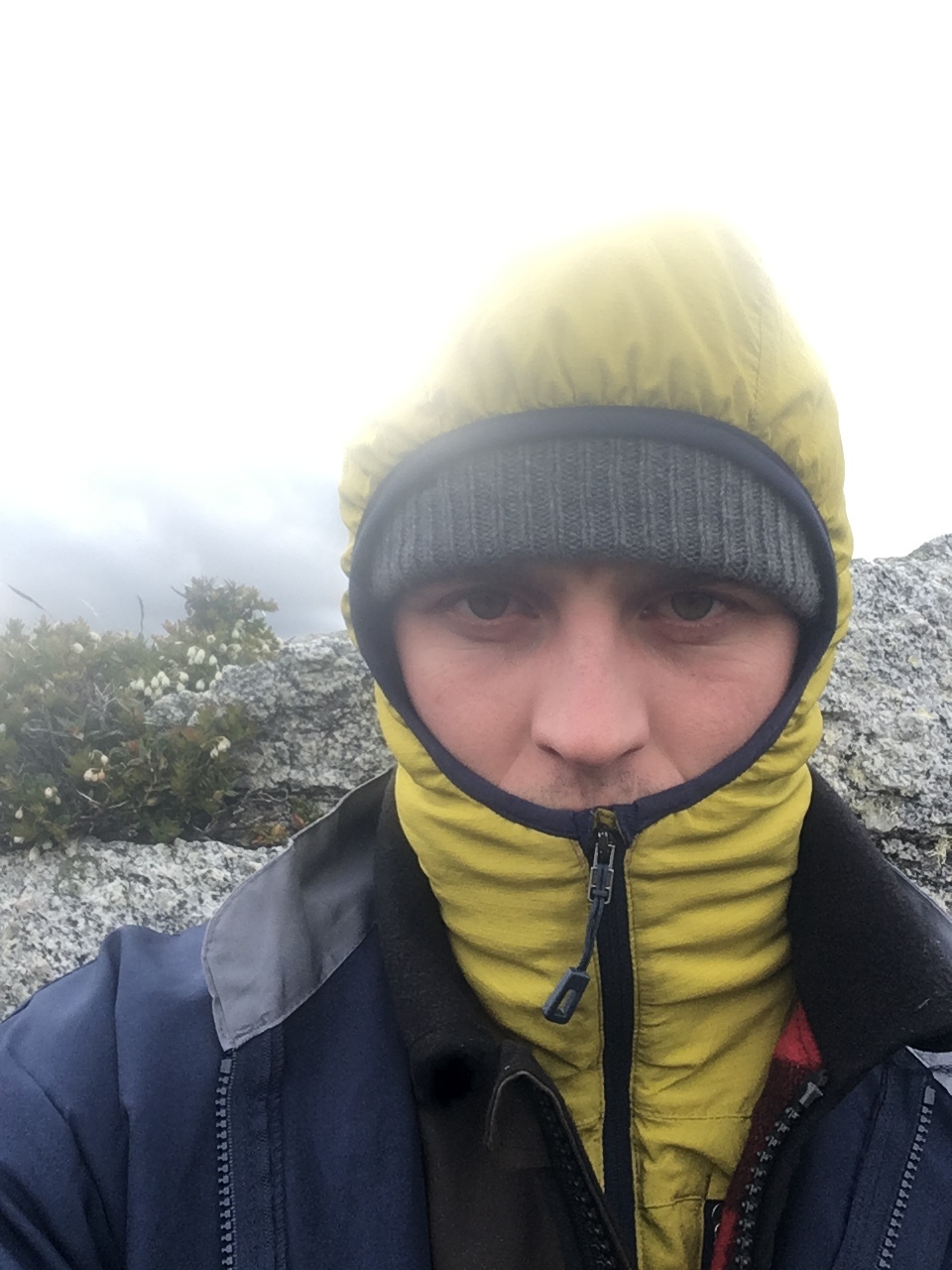
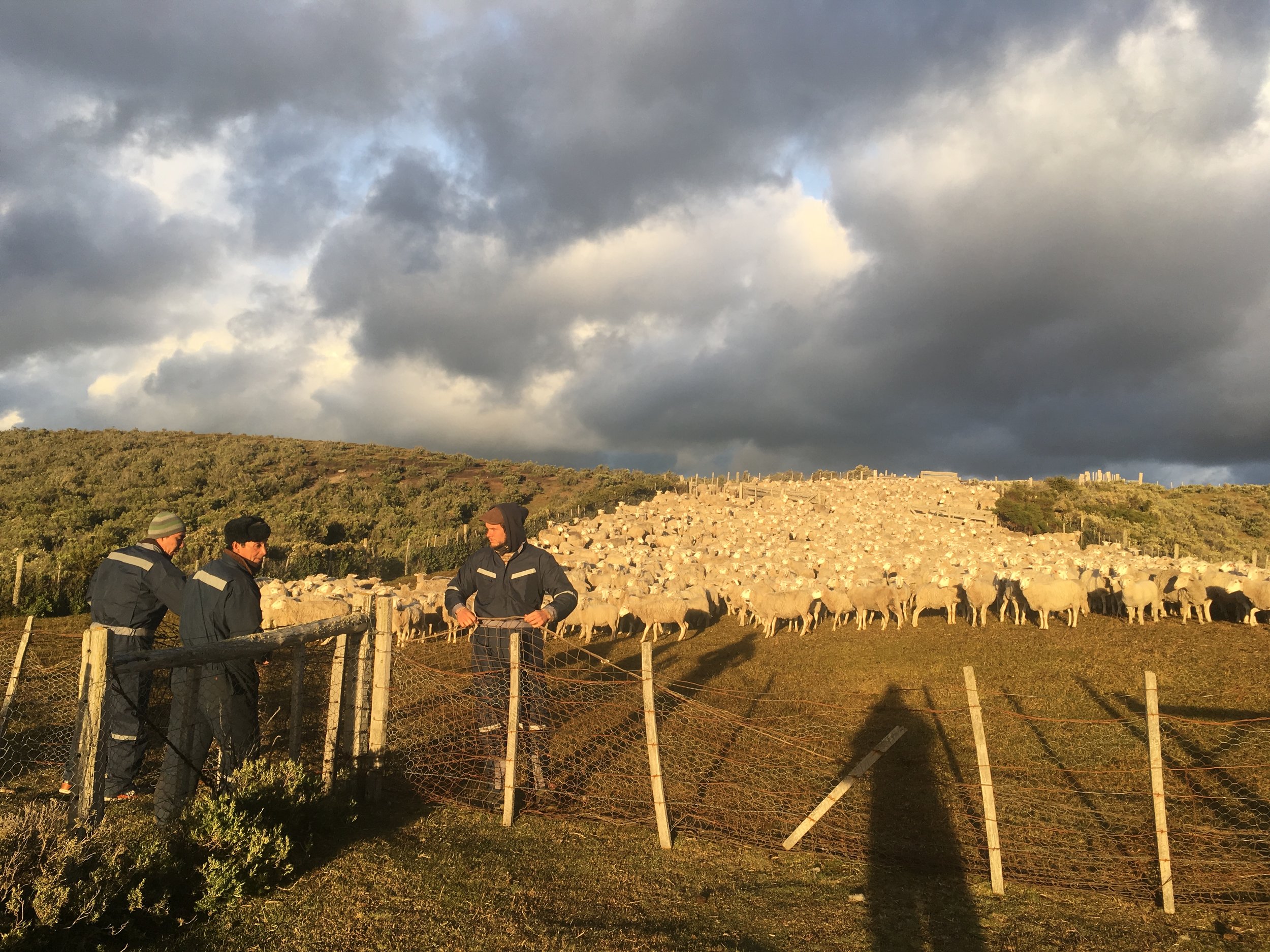
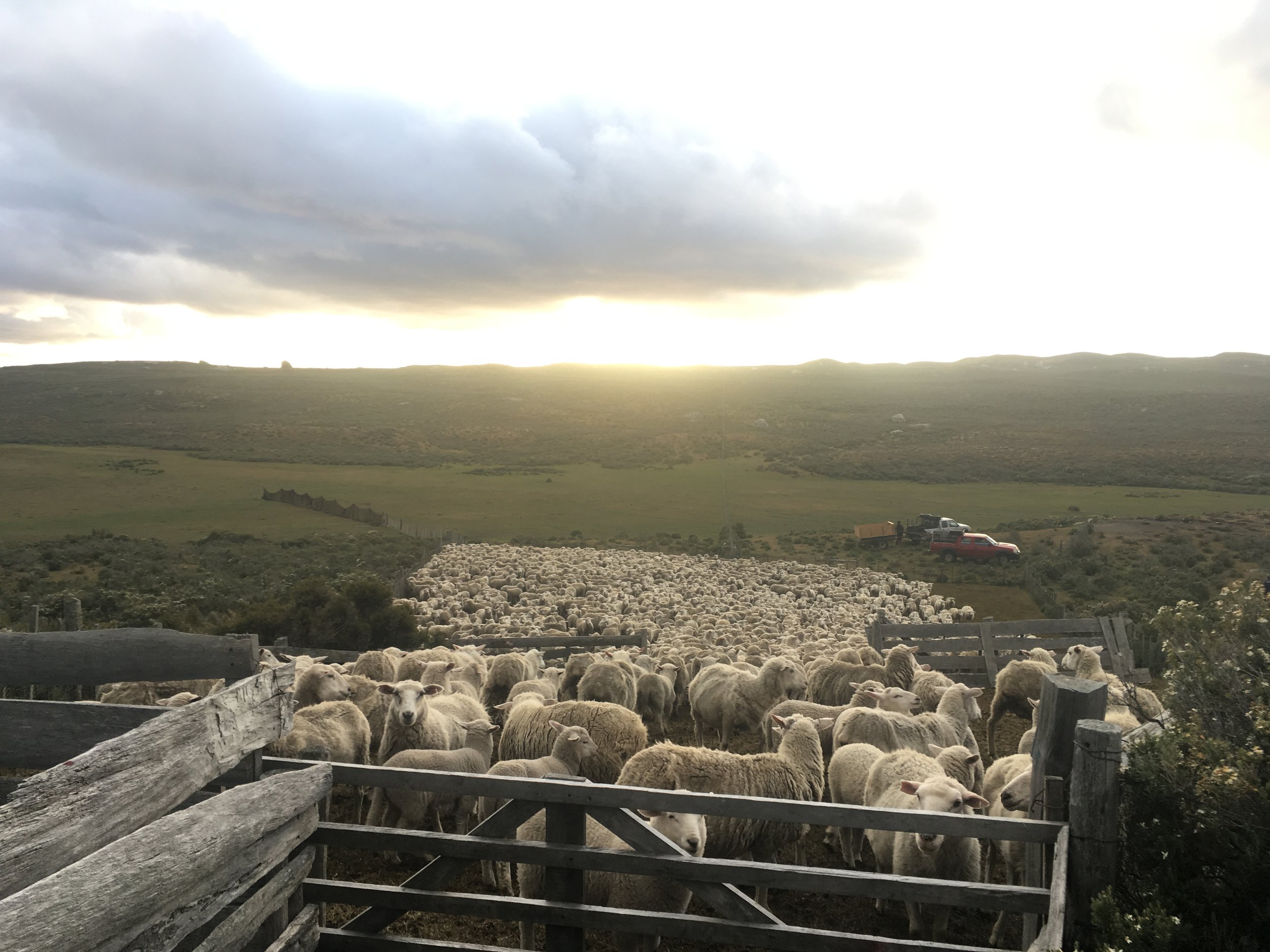




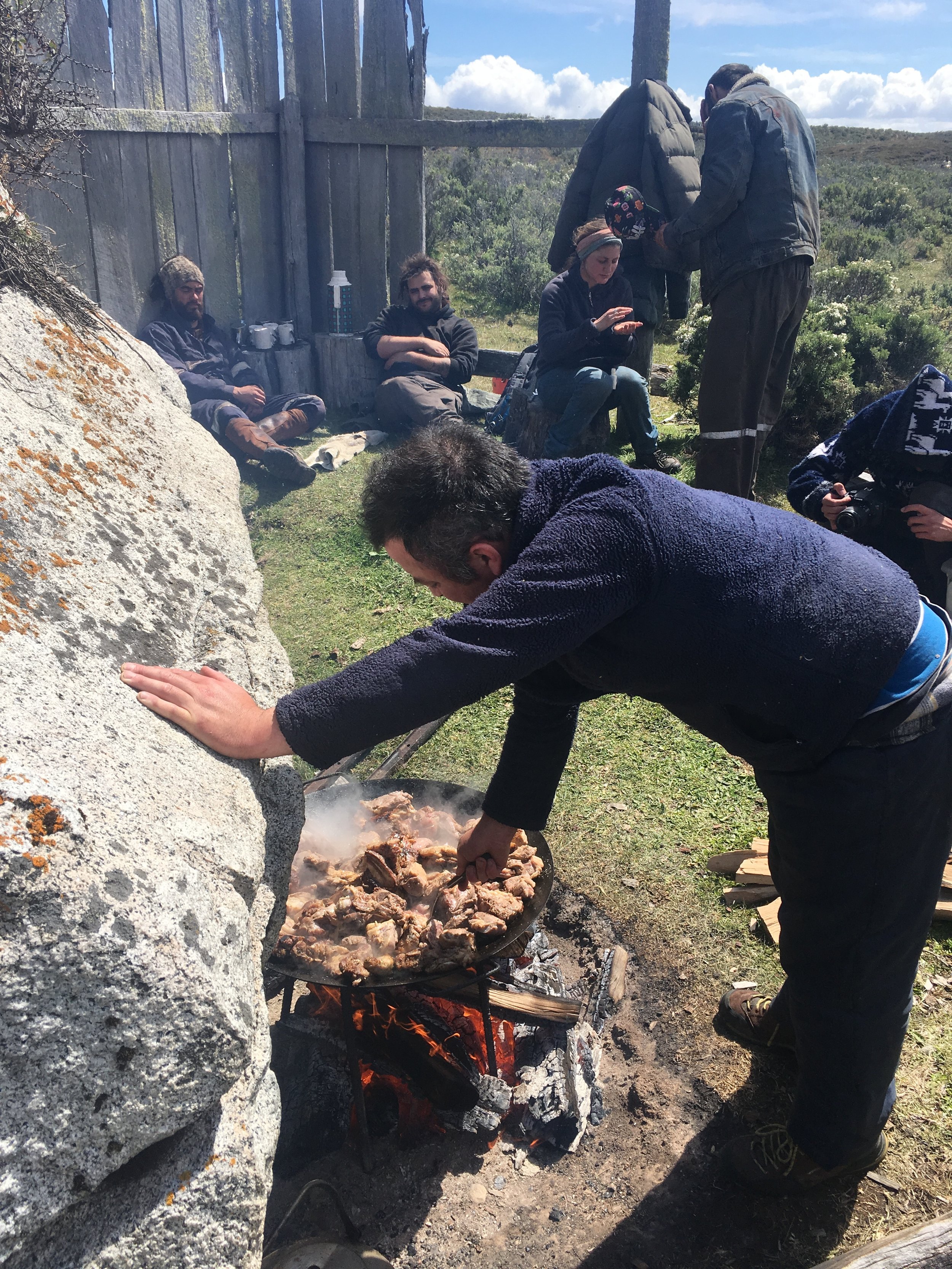
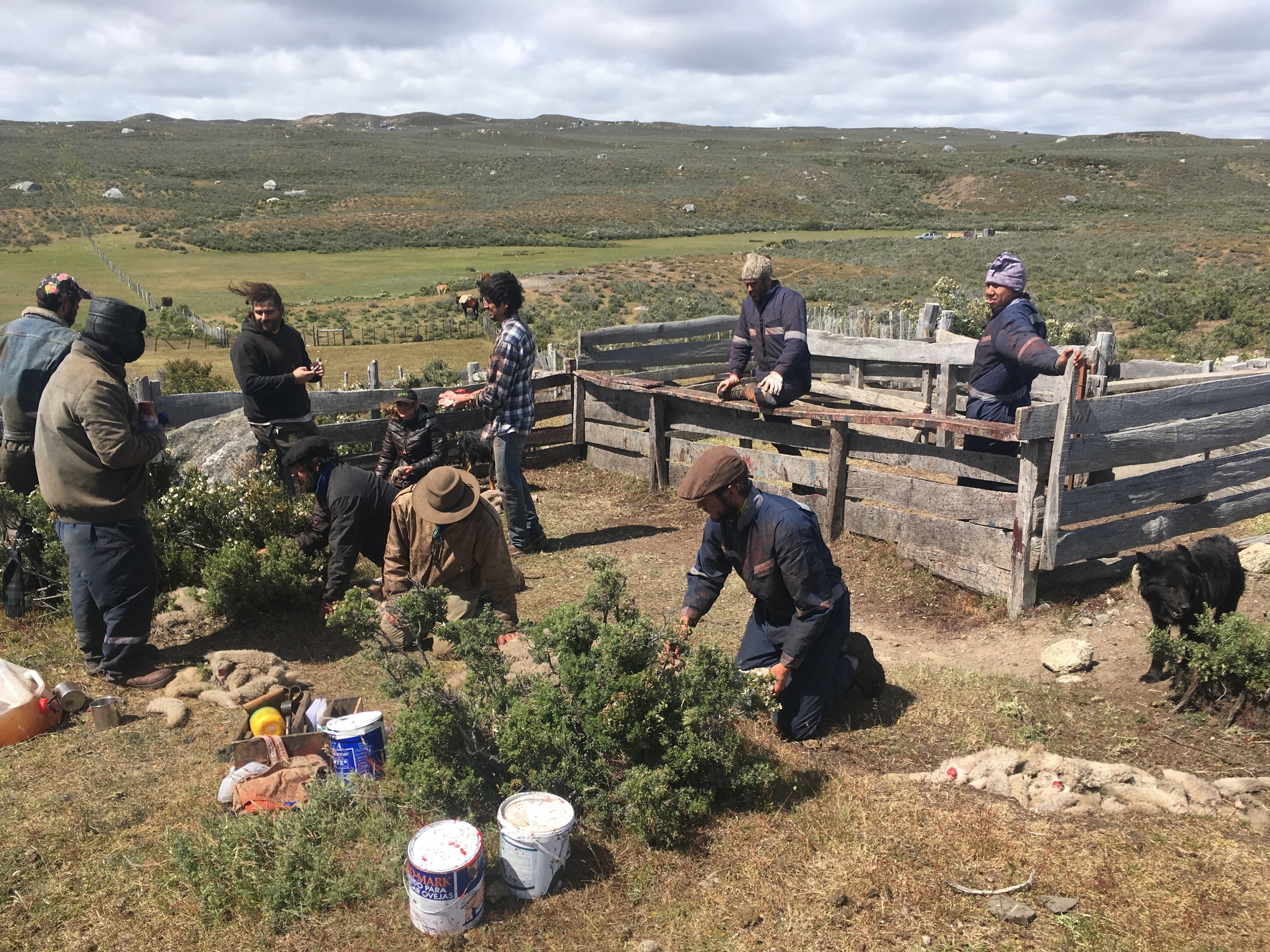



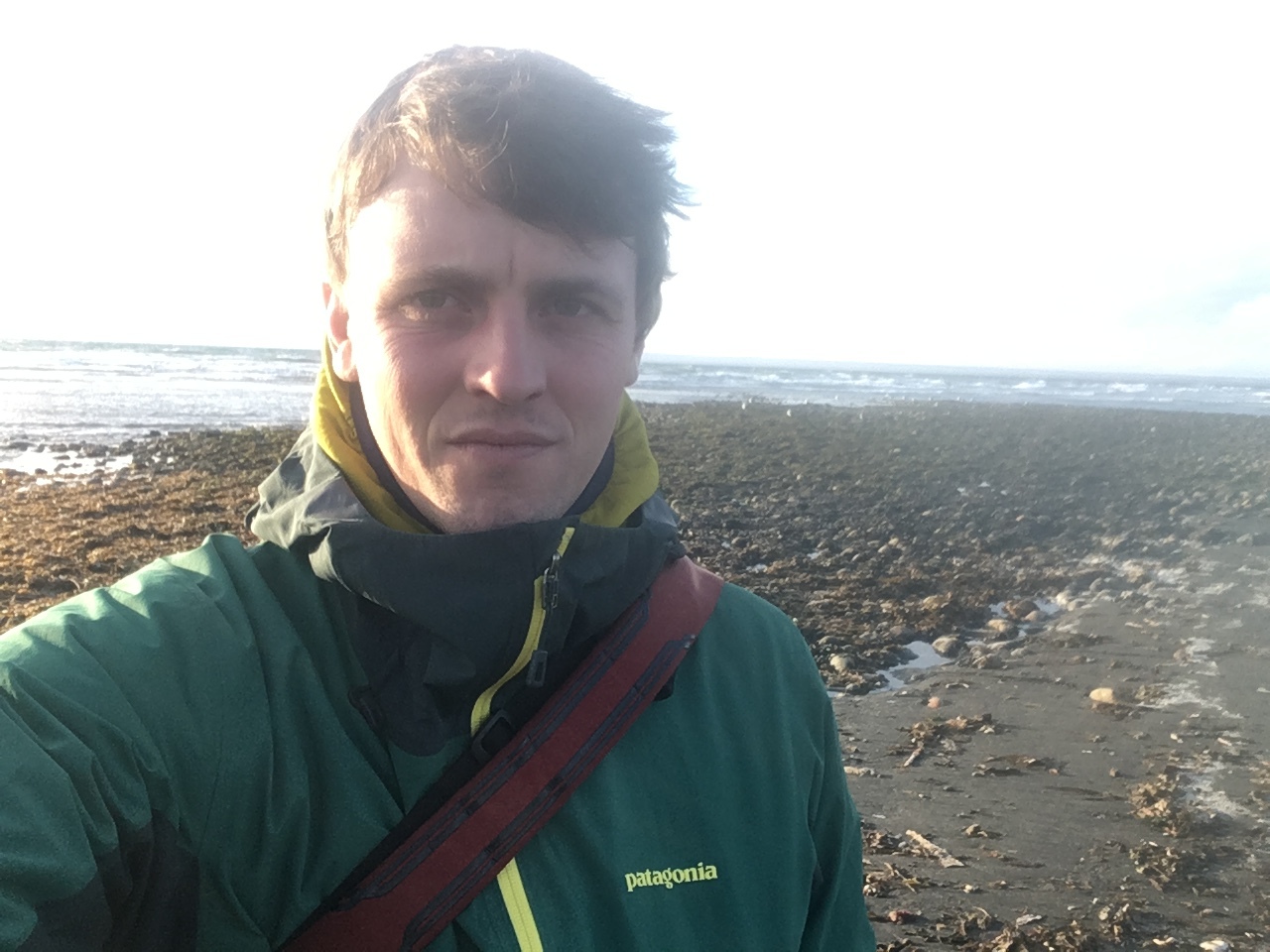

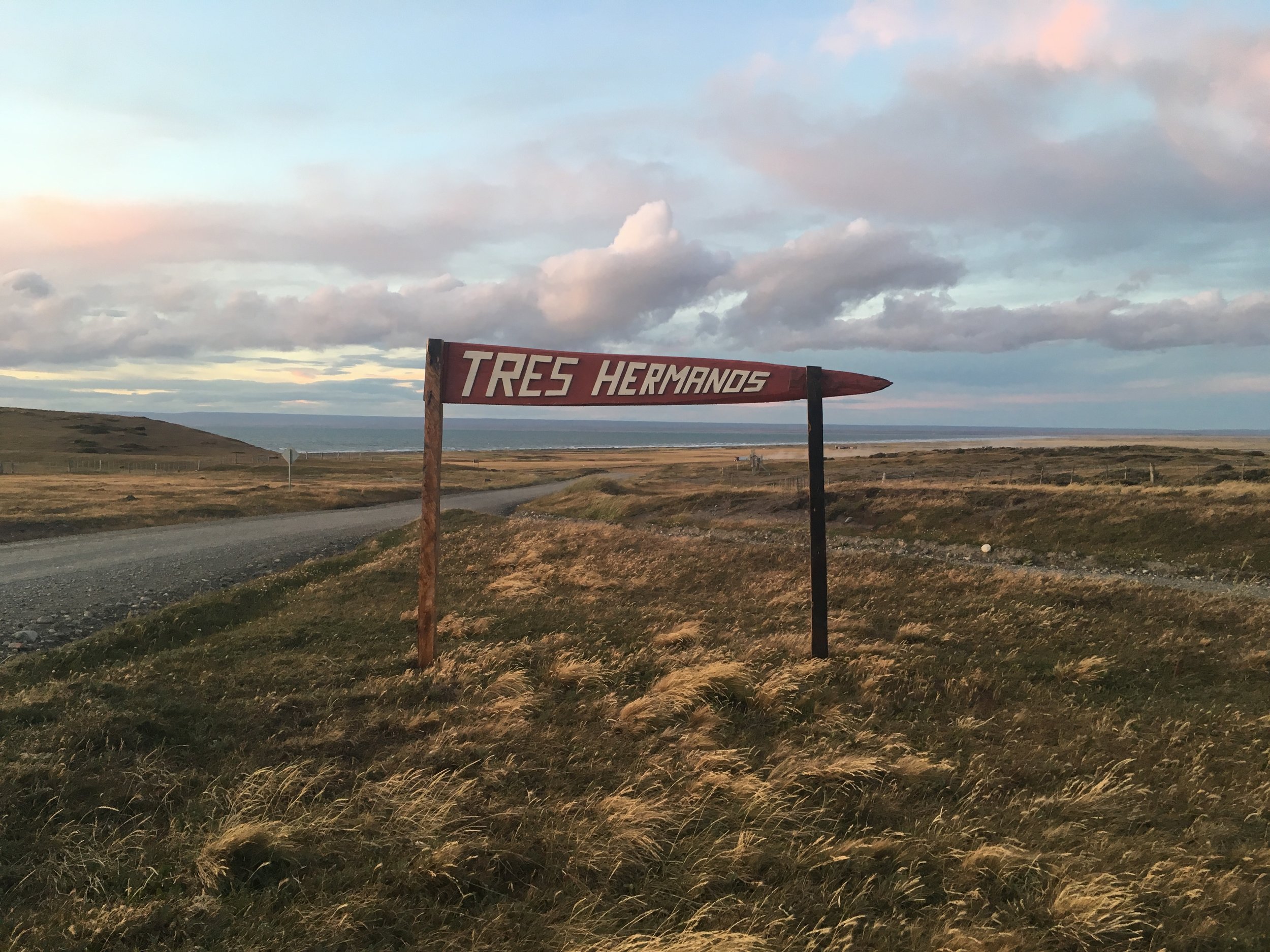
It was messy work. Sheep faeces and urine, disgruntled 30-100lbs bawling lambs, and warm splattering blood coupled with sun and wind burn. The morning session saw 693 lambs counted and marked, a good return over the prior years.
Lunch was fried lamb and onion in a large cast iron pan held up over a wood fire with welded rebar legs and tucked out of the wind behind a large boulder and an old wood fence. Meat was served with white bread and an incredible chili sauce. Being allergic to gluten and vegetarian was something I shared for a laugh later, but for the time being, lamb was lunch and dinner.
After lunch the process was repeated, getting everything ready for the next day.
An eye opening moment was an ovejero showing us a traditional method of castrating a lamb; instead of elastics, he used a knife to make a small slit in the scrotum and used his teeth to pull the balls out.
After dinner I went on a solo walk down the beach in the sunset for some alone time. I stopped for a minute and looked at the King Penguins, but then quickly moved on thinking “whatever, I’ll see loads of those in Antarctica.” I learned to my amusement later that “King Penguins don’t actually live in Antarctica…”
Day 4/6
Another 4am start. We finished a flock in the same field and then moved deeper into the farm. Memories from this day are: large granite erratics, old wooden bridges, pummelling rain, and chasing escapee lambs at full sprint with wet clinging pants through thick scrub bush with the help of all the dogs. The weirdest part was having the rain clear off and getting a sunburn an hour later.
I fell asleep on the couch at 6pm, then transitioned to a sleeping bag four hours later.
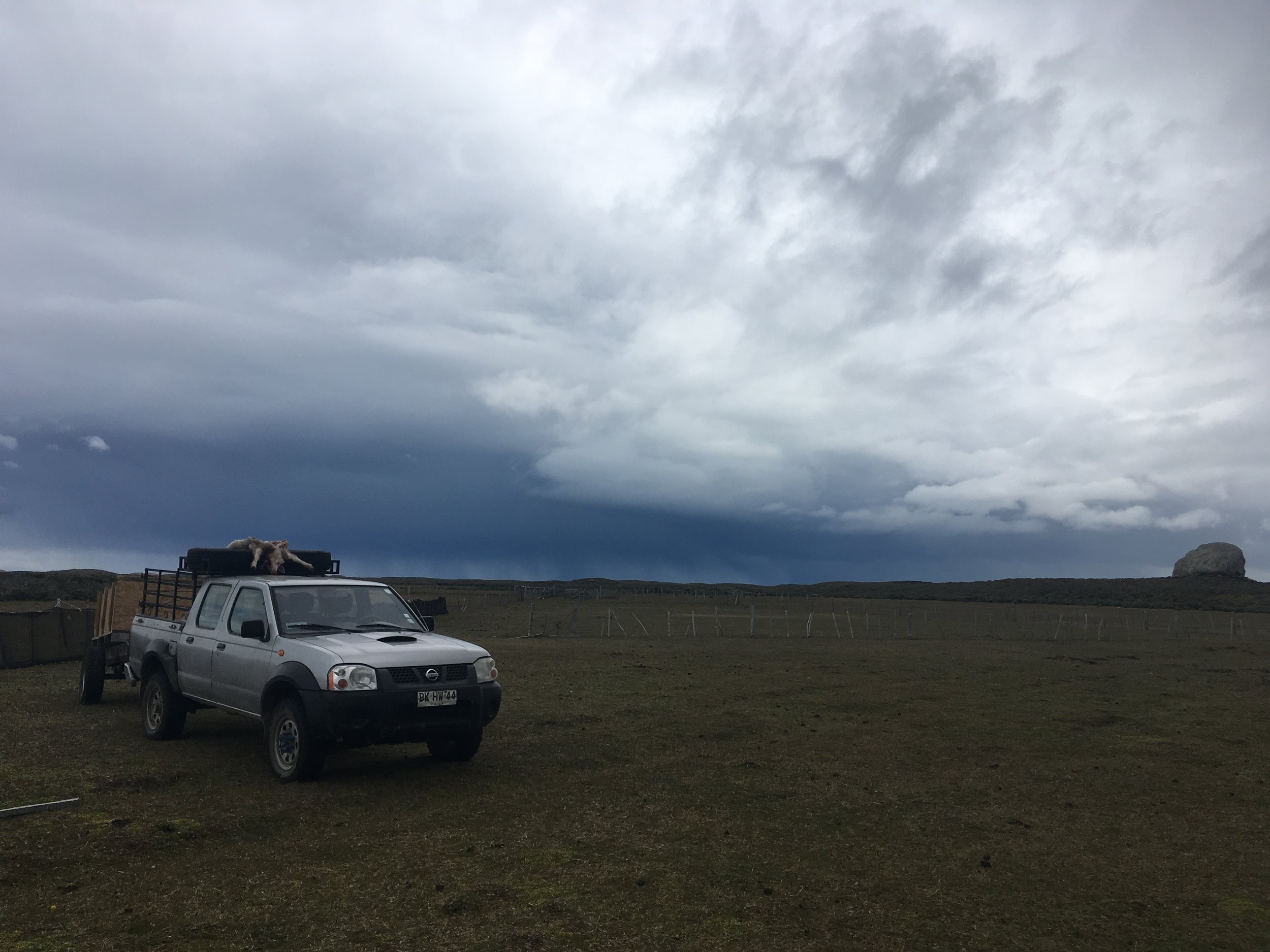
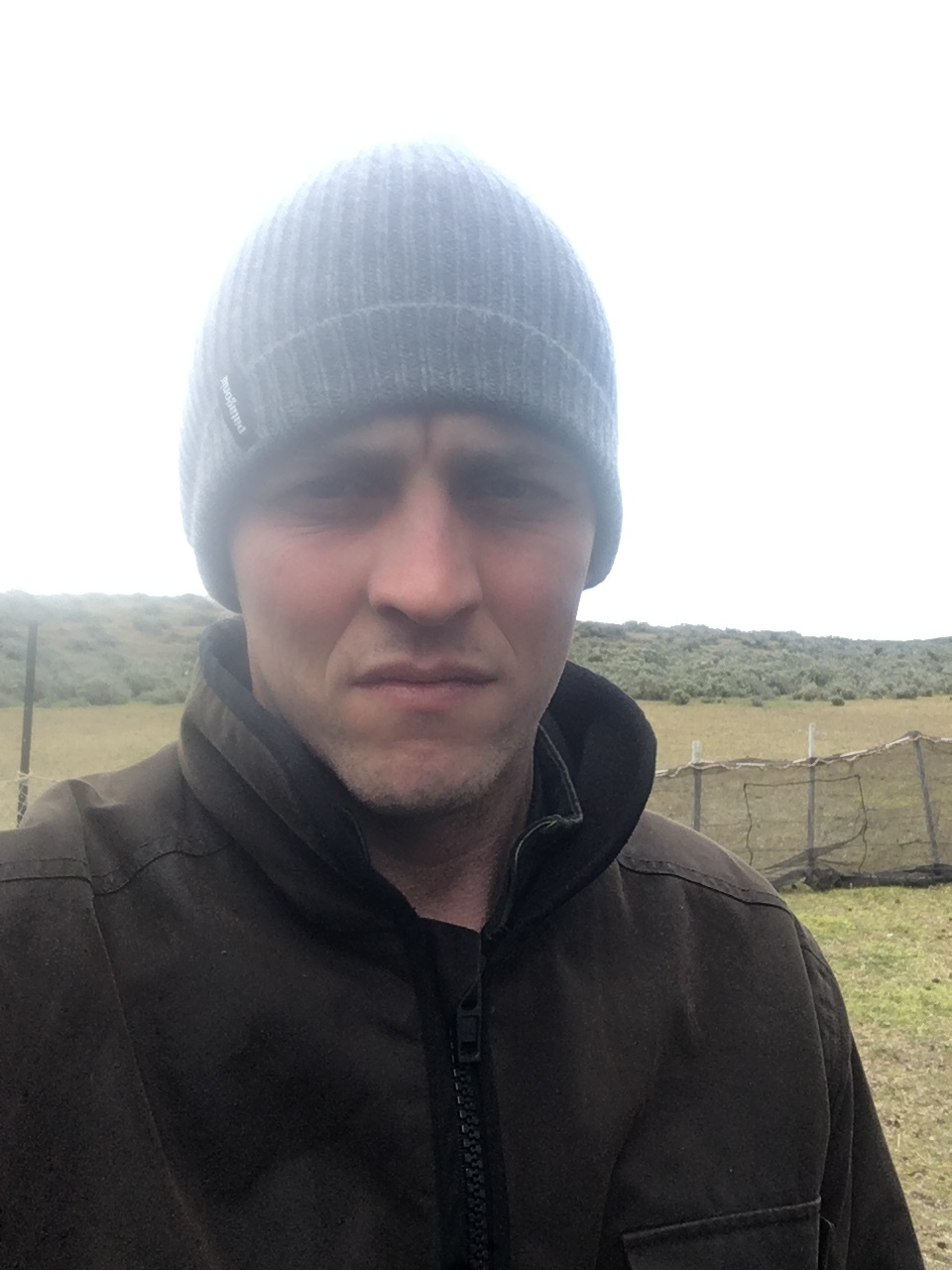




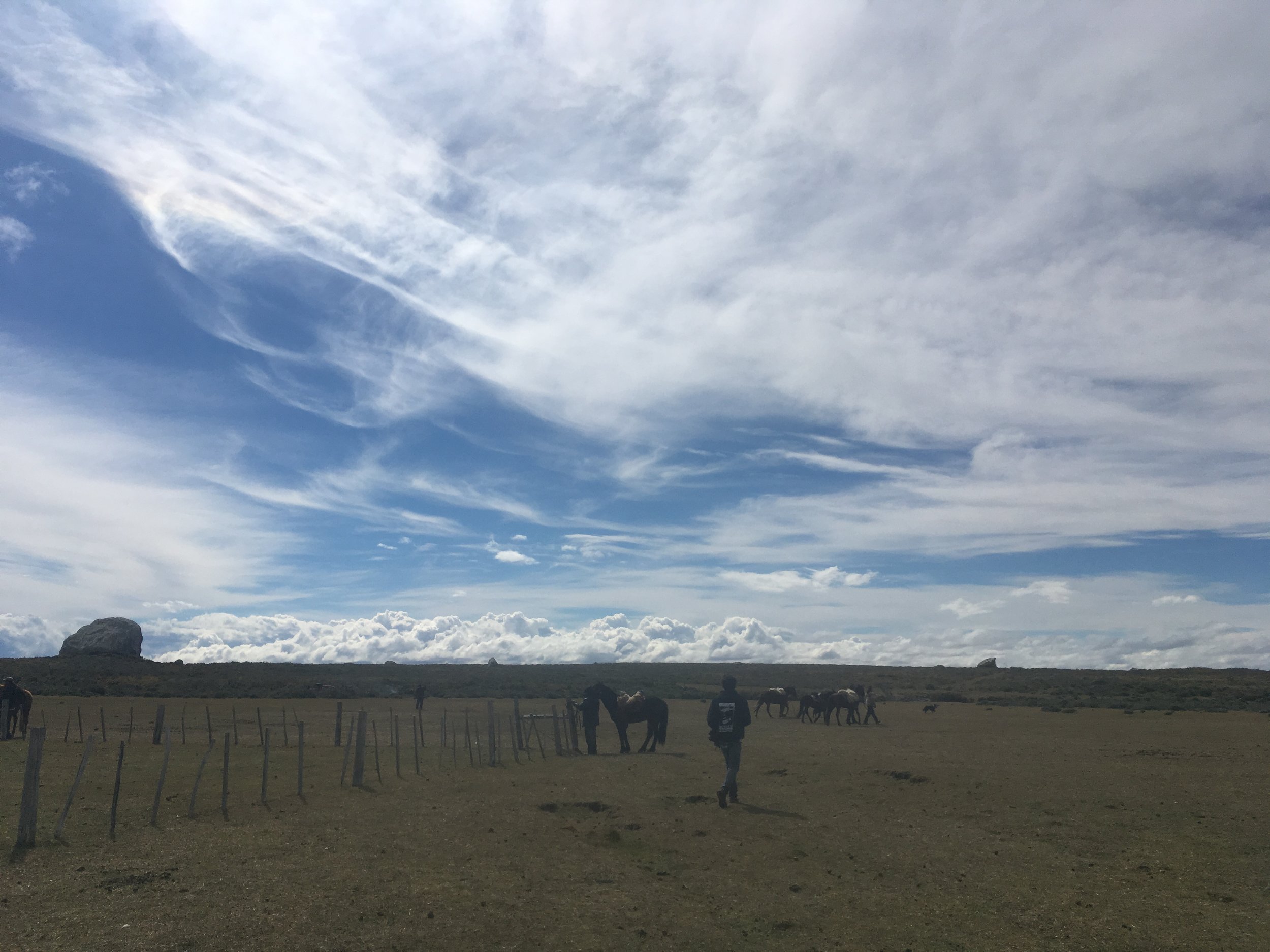

Day 5/6
We slept in and started at 6am. The whole crew mobilized and drove an hour down the highway to another section of the farm. There was another set of horses and dogs, and a caretaker in a cabin —all infrastructure that was put to use for the next two days. The scrub brush was replaced by grass.
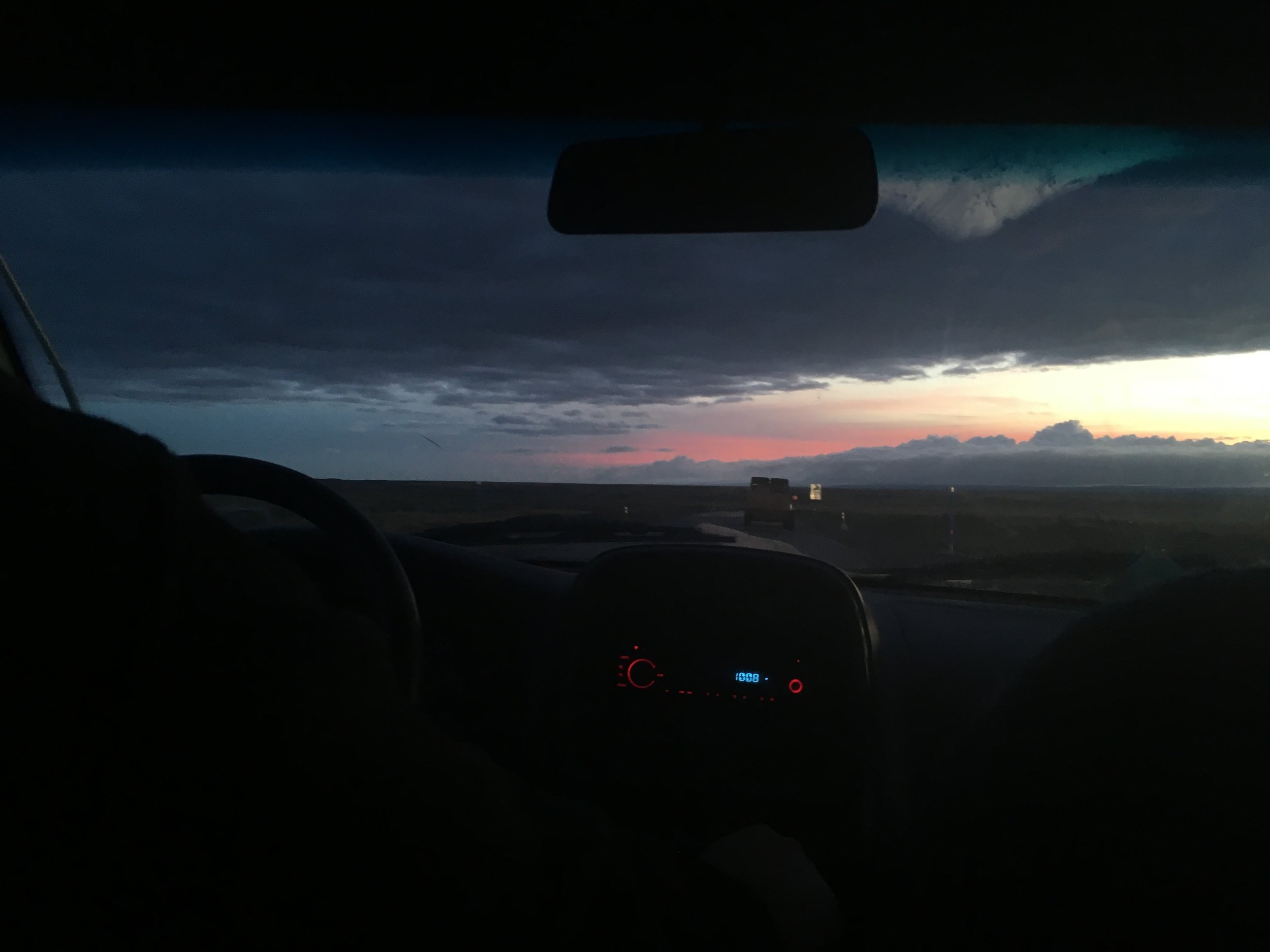
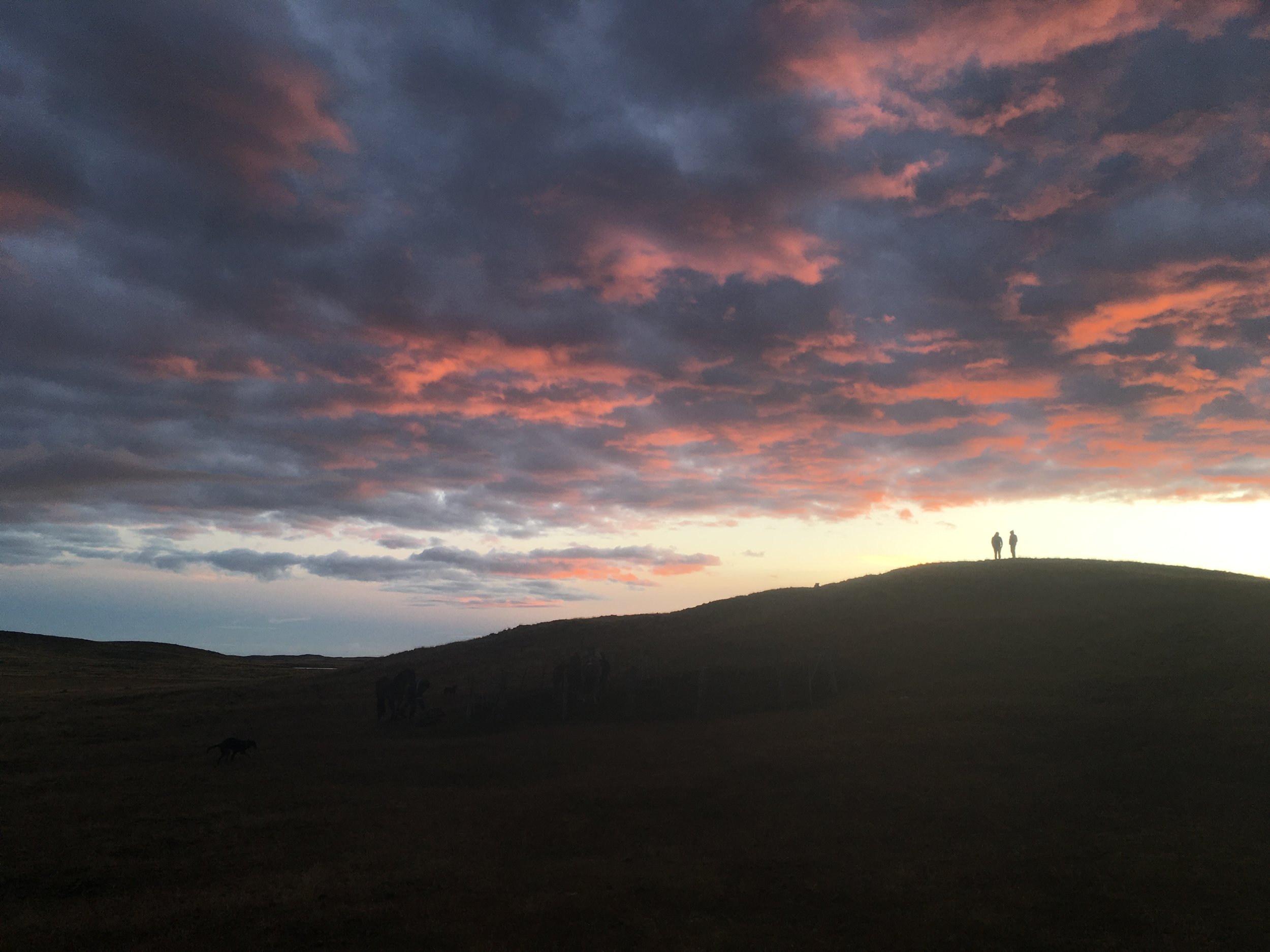
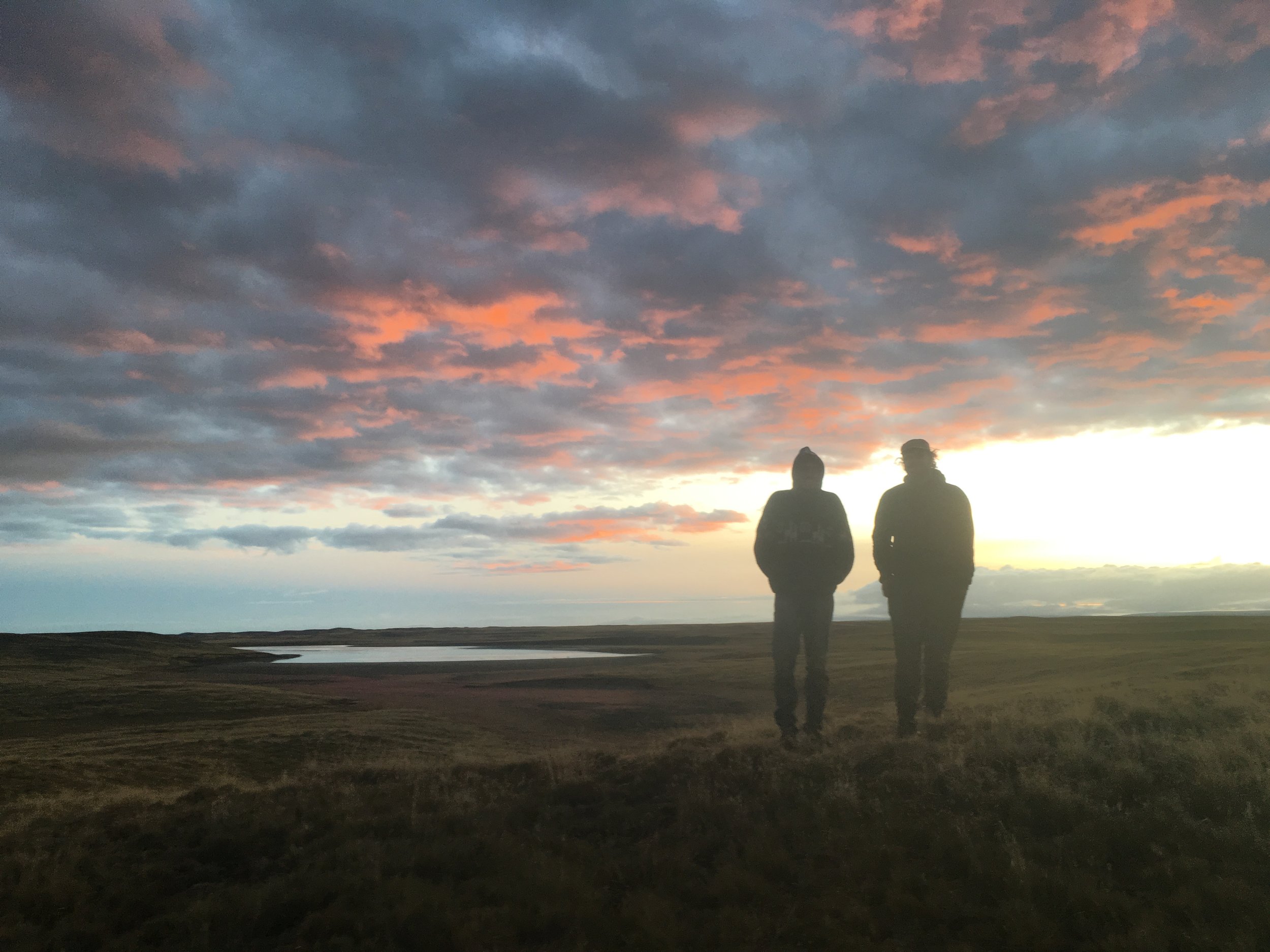

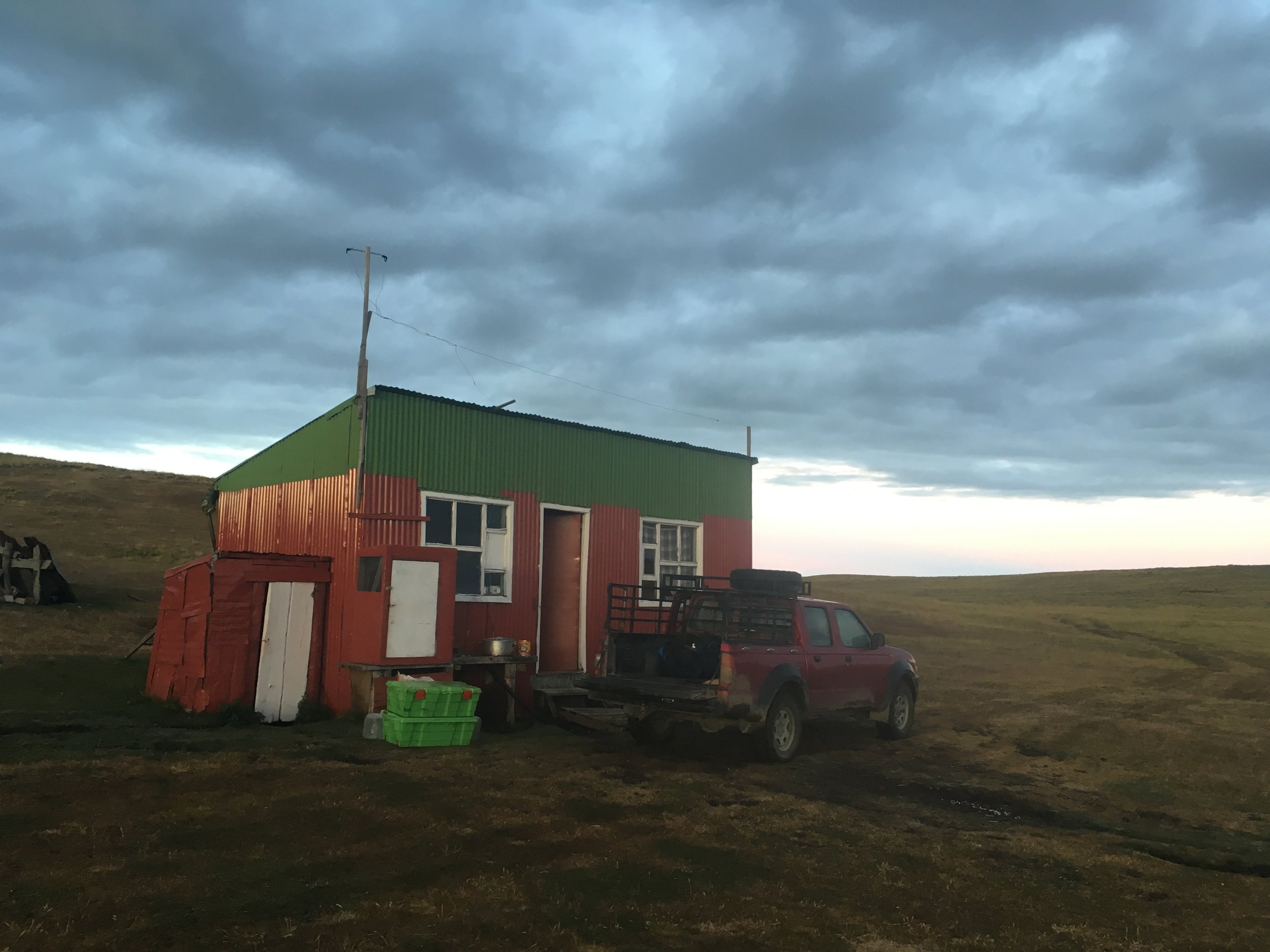
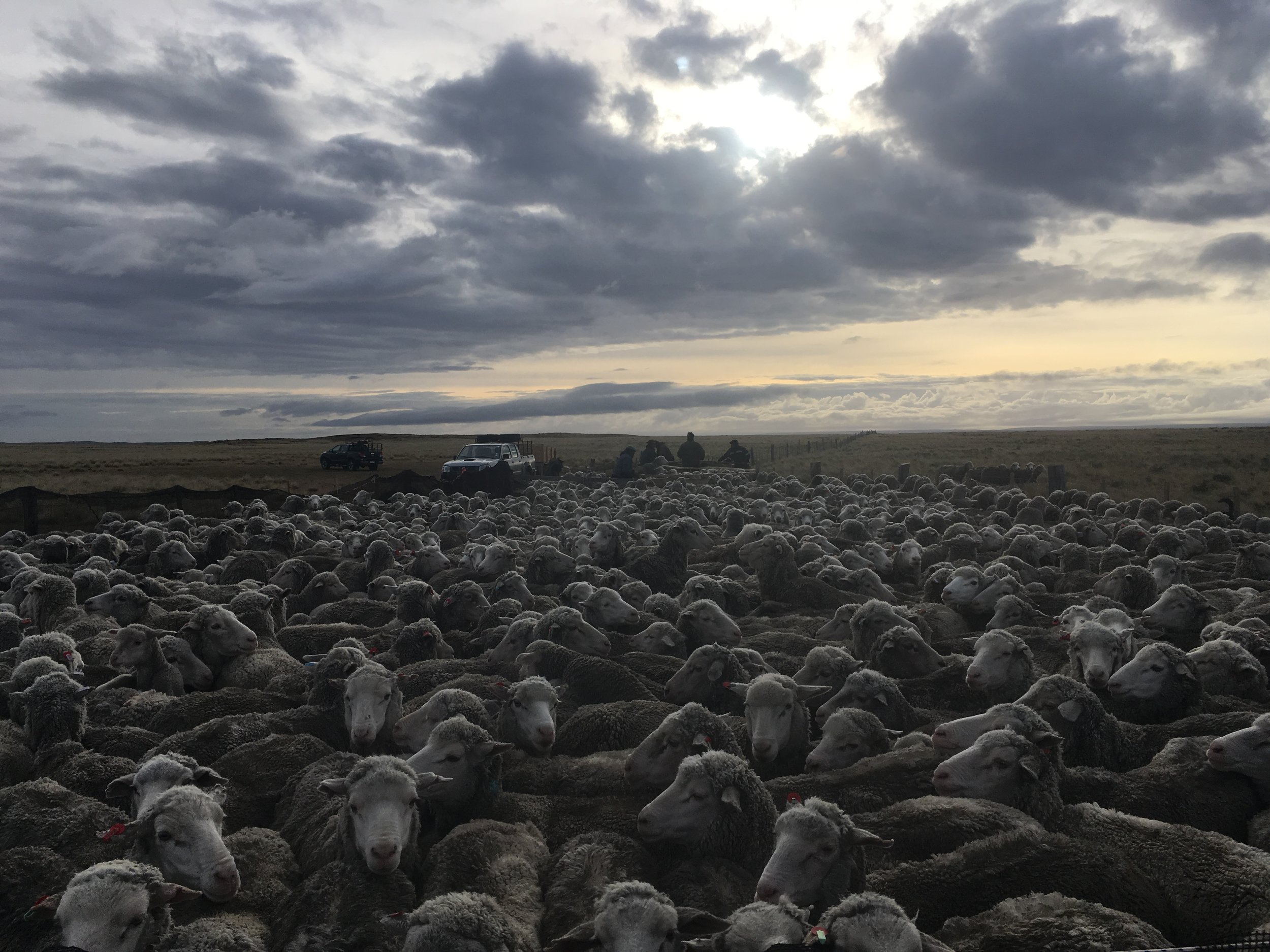


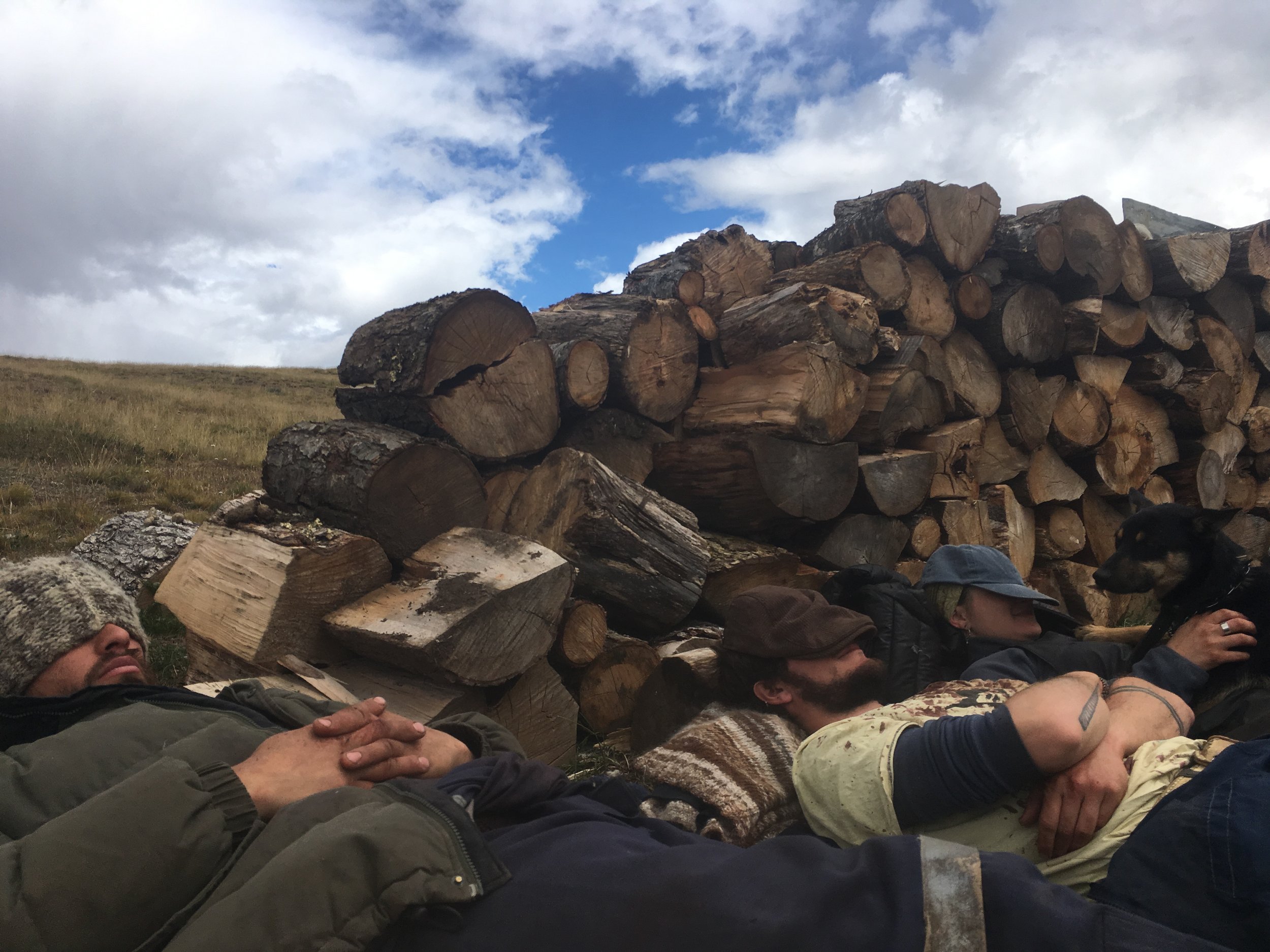

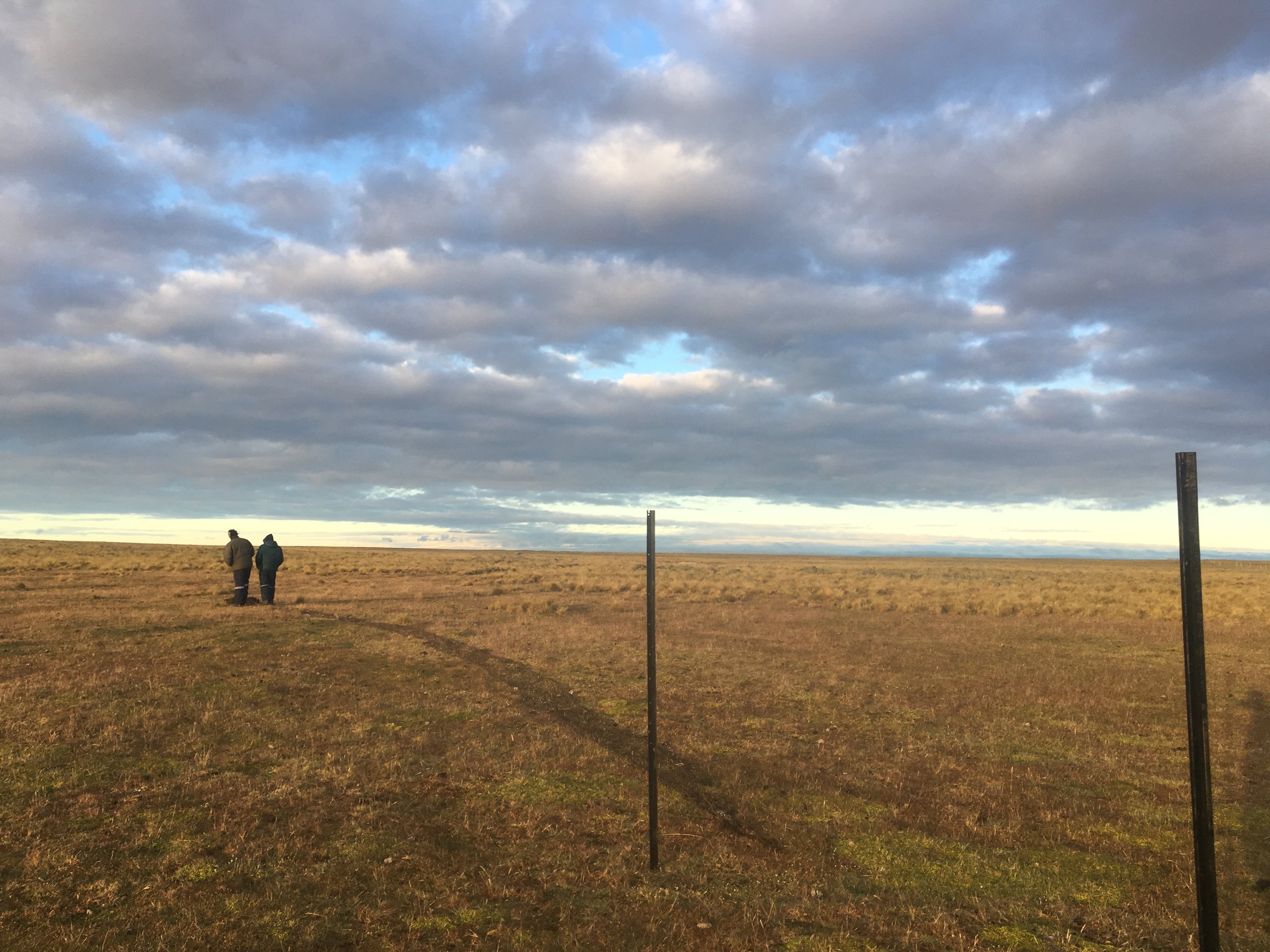
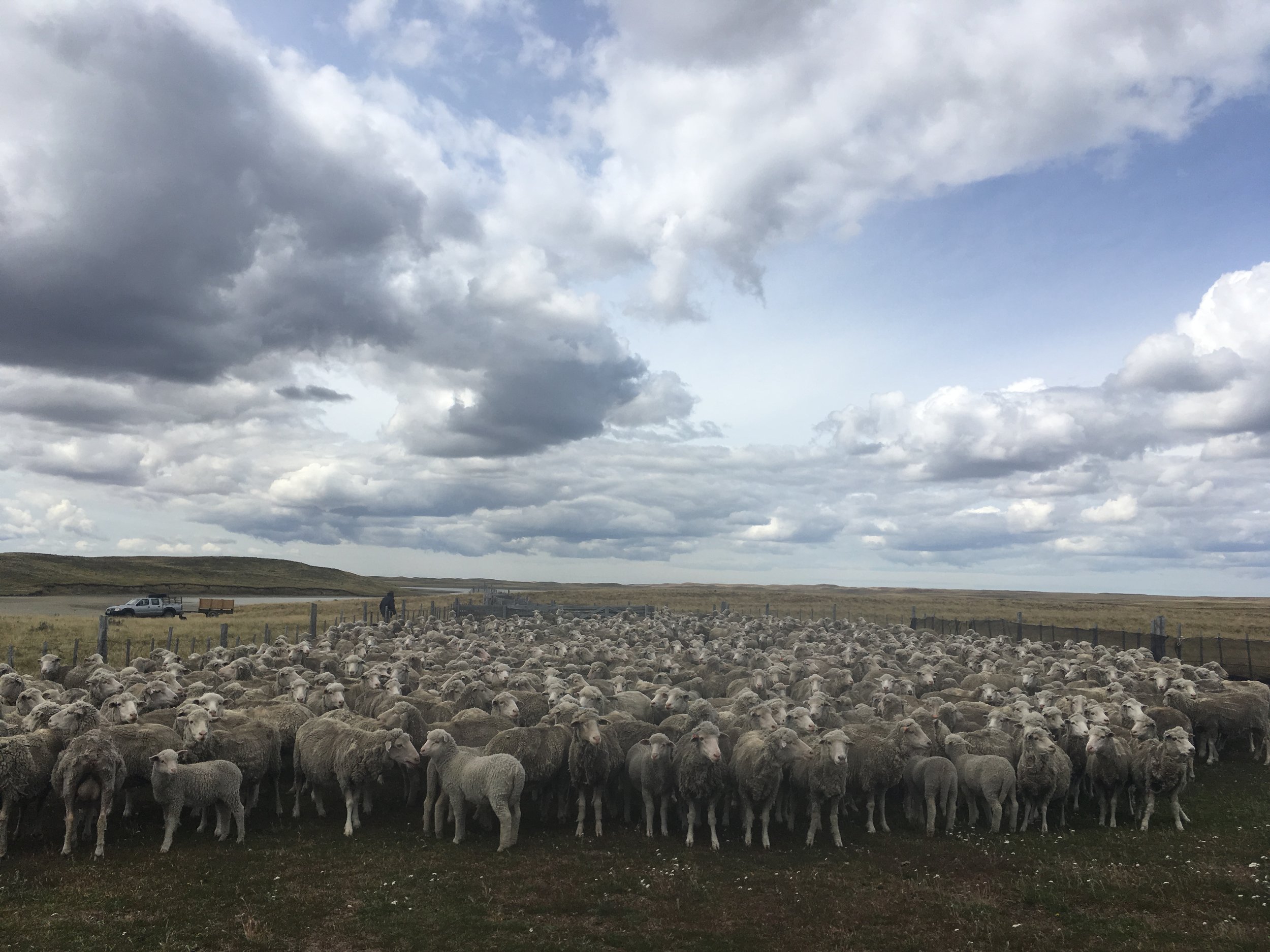
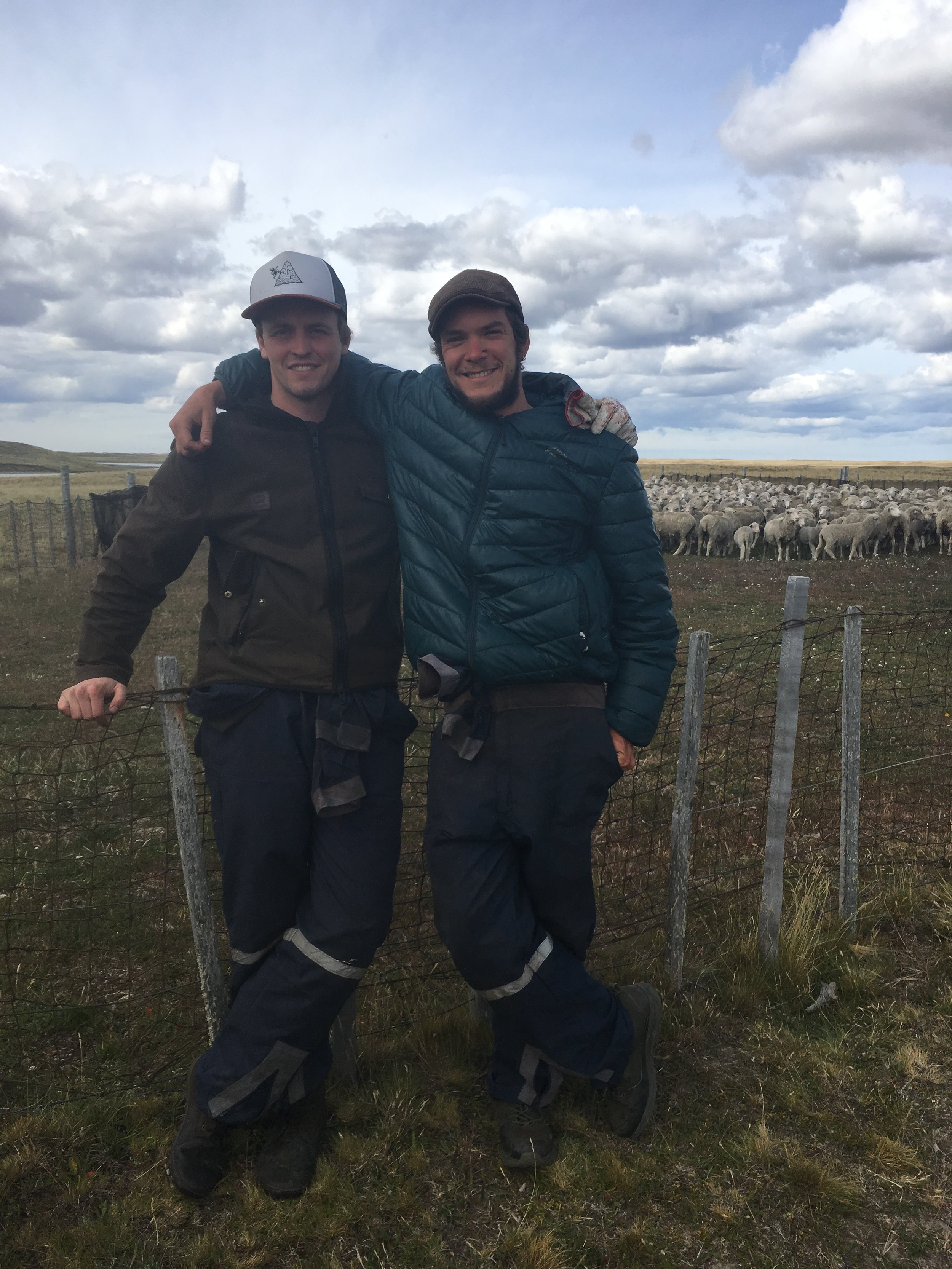

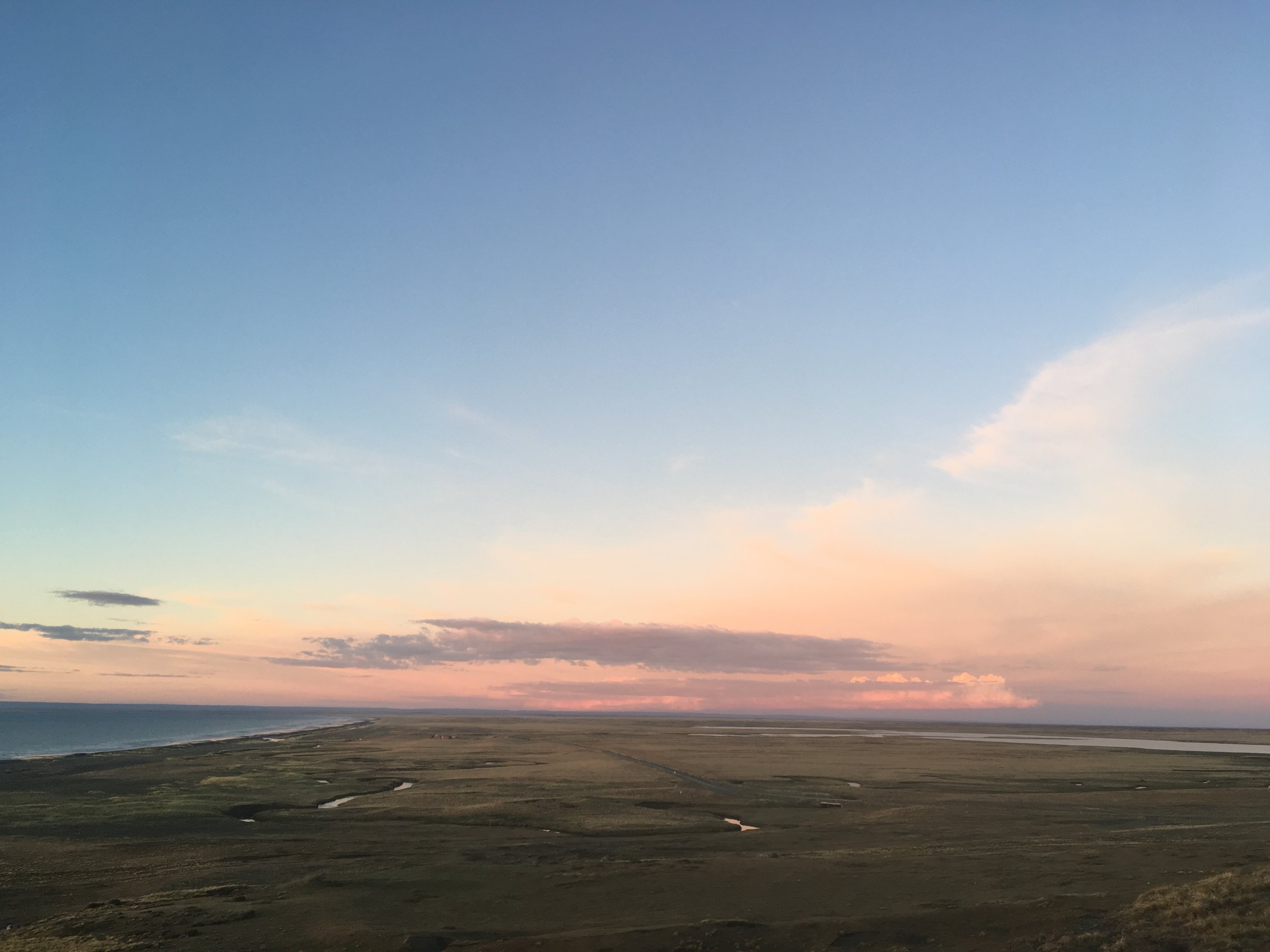
After the days work we drove back to Tres Hermanos. The wind had abated and we took in the sunset from a grass topped sand bluff overlooking Useless Bay —keeping a ready eye out for the Sei whales Benja was monitoring. Sea urchins were collected for dinner and we watched several tiny black and white dolphins play in the waves 2-3 meters off the beach. In Chilean style, we started cooking dinner at 11pm.
Day 6/6
We started late and commuted back to the same field. It was quickly finished and we took a much appreciated afternoon off. Plans, like always, changed several times over the course of the meal. Eventually, a last minute decision was made to try and leave that night. We drove across the island, music blasting. A bus delivered us across the Strait of Magellan and back to Punta Arenas later that night.

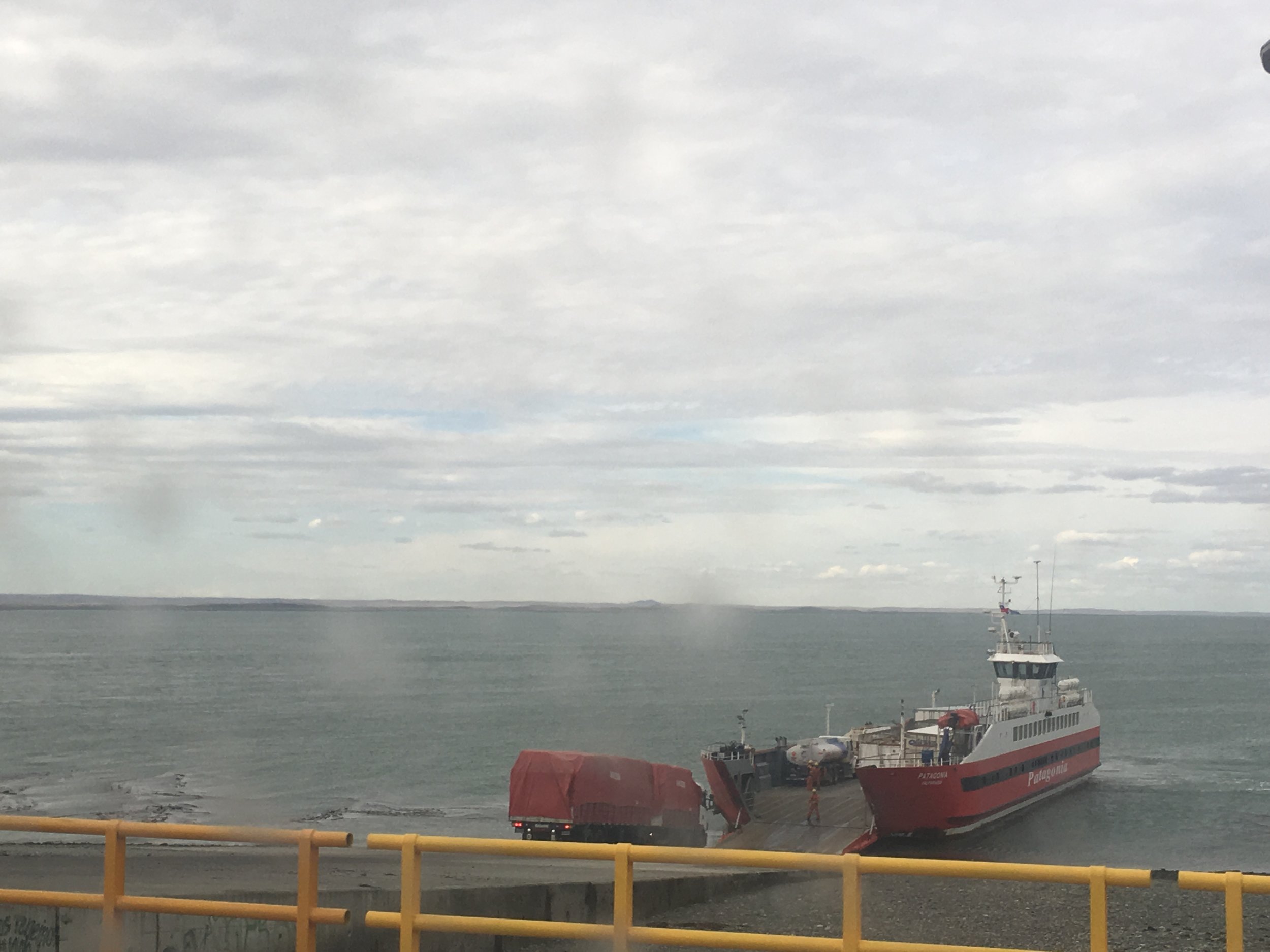

The experience at Tres Hermanos was over. Thousands of sheep had been sorted and there was still two weeks until the work contract in Antarctica started. Legs itched and Patagonia called. I packed my tent and caught a bus north to head into the mountains.


